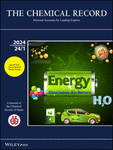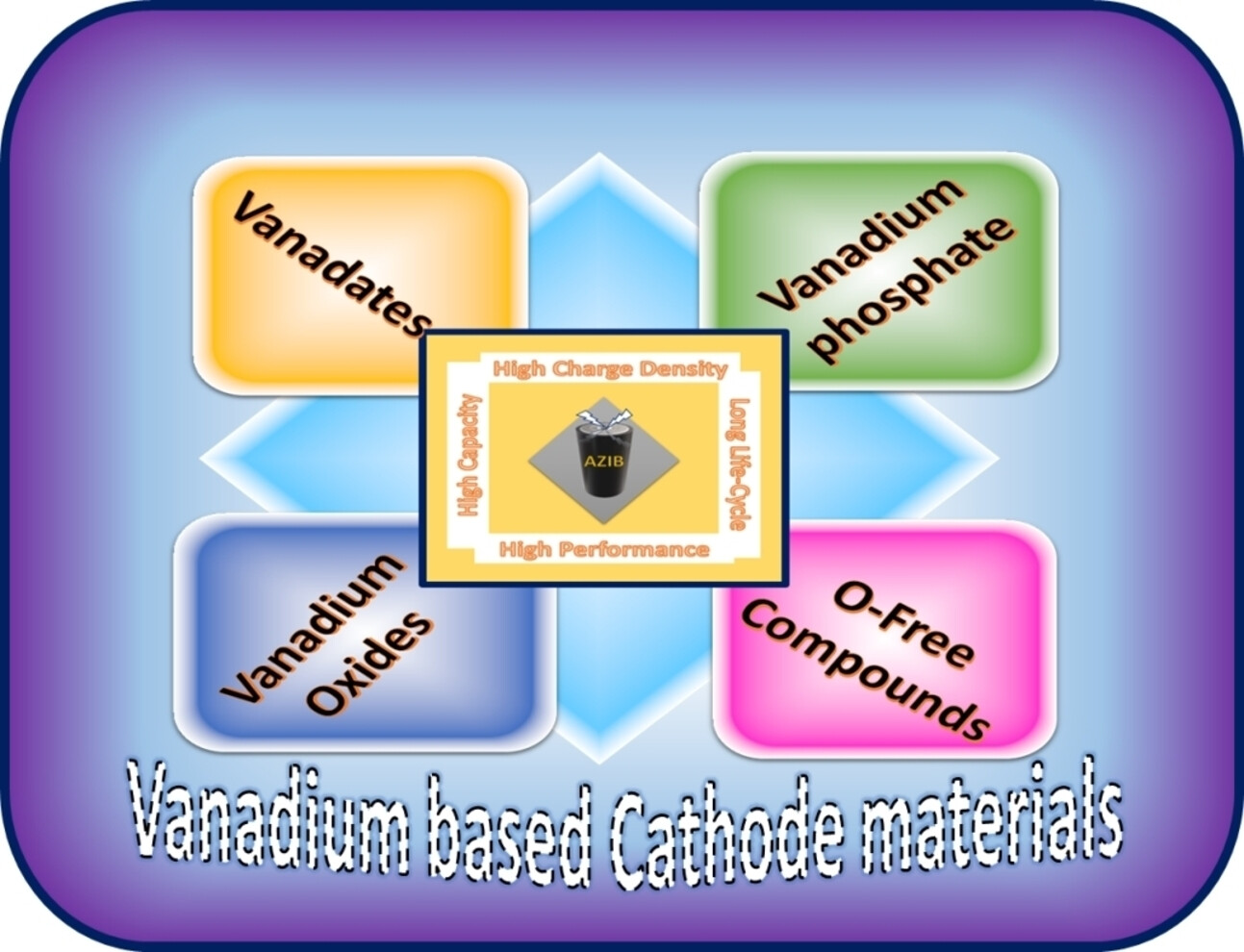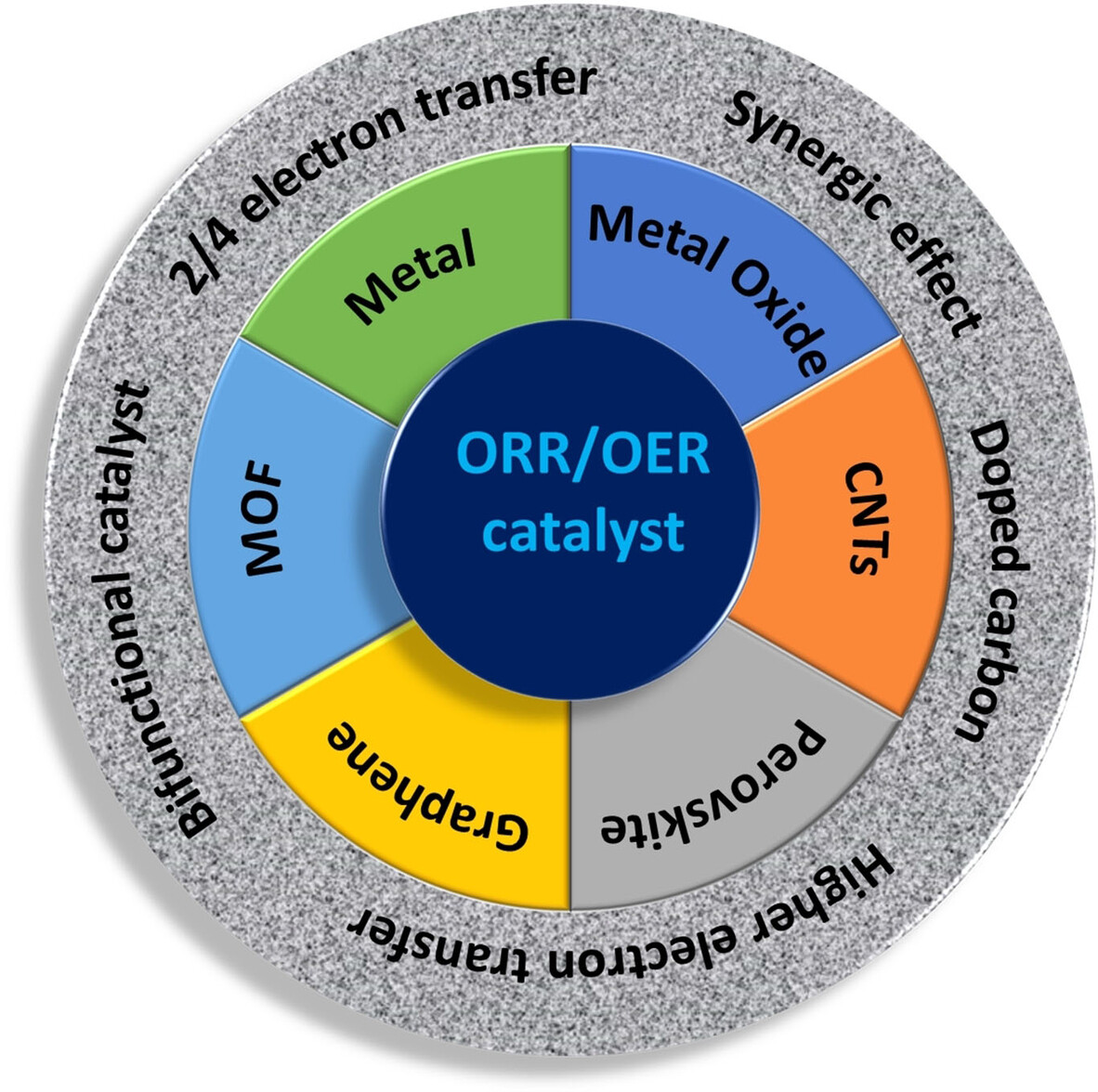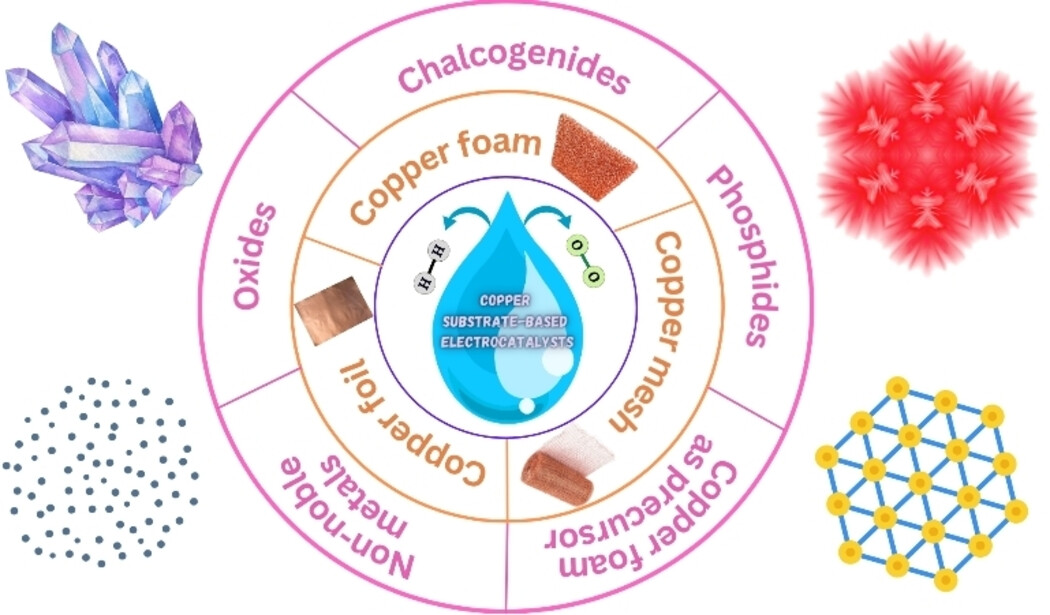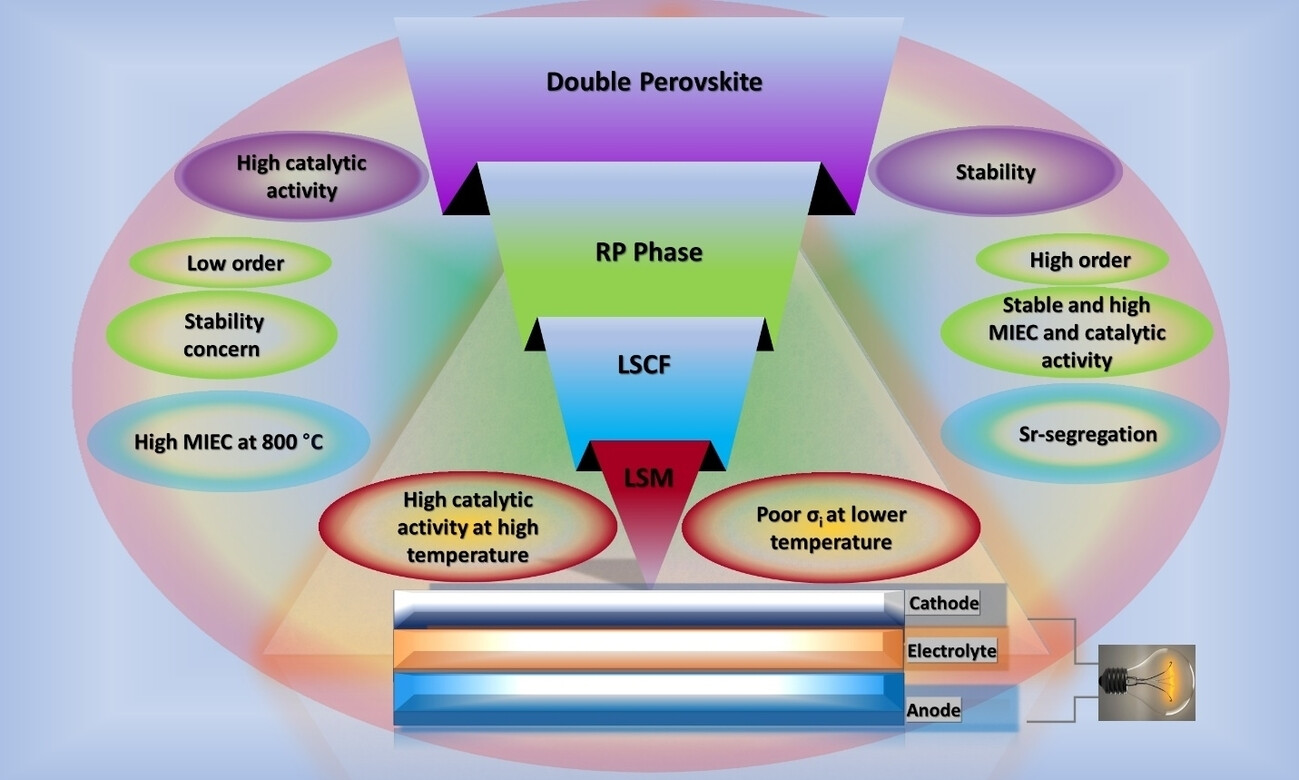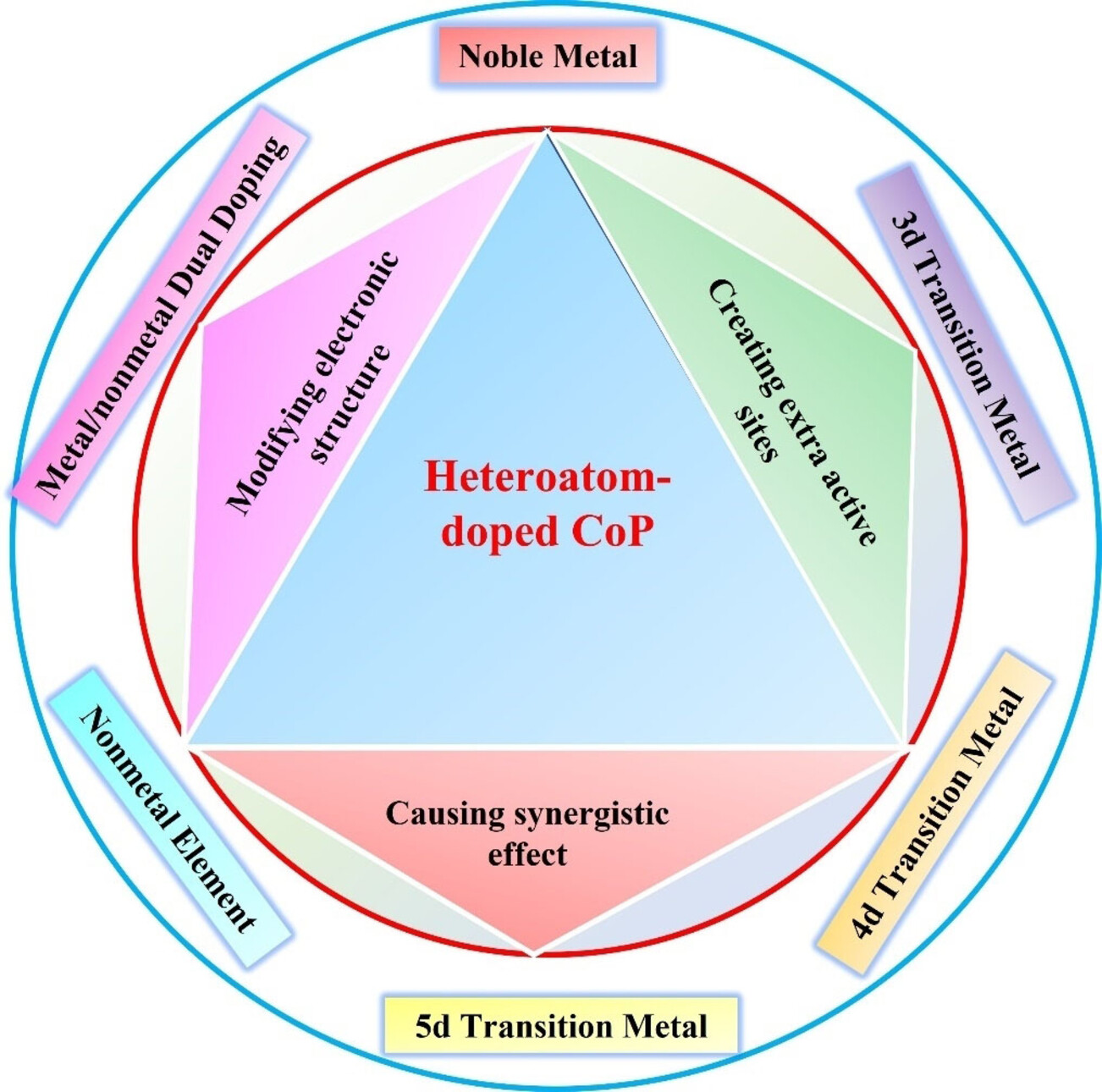Journal list menu
Export Citations
Download PDFs
Covers
Cover Picture: A Mechanistic Overview of the Current Status and Future Challenges of Aluminum Anode and Electrolyte in Aluminum-Air Batteries (Chem. Rec. 1/2024)
- First Published: 11 January 2024

The cover picture shows the dynamic energy landscape of aluminum-air batteries (AABs) technology. Due to their exceptional energy density, AABs are highlighted as promising candidates for electric vehicle power sources. There is a detailed illustration of aluminum anodes surrounded by various shapes and lines, artistically representing the electrolytes, both aqueous and non-aqueous, in vibrant colors to emphasize their importance in battery performance. Significantly, the study also underscores the role of OER and HER, key processes in air batteries that contribute to their efficiency and effectiveness. The overall study integrates elements of modern technology, conveying a sense of advanced research and innovation in the field of battery technology. See the Review by S. M. A. Nayem, S. Islam, M. Mohamed, S. S. Shah, A. J. S. Ahammad, M. A. Aziz, and coworkers (DOI: 10.1002/tcr.202300005).
Editorial
Preface to the Special Issue on Recent Advances in Electrochemical Energy Storage
- First Published: 27 December 2023
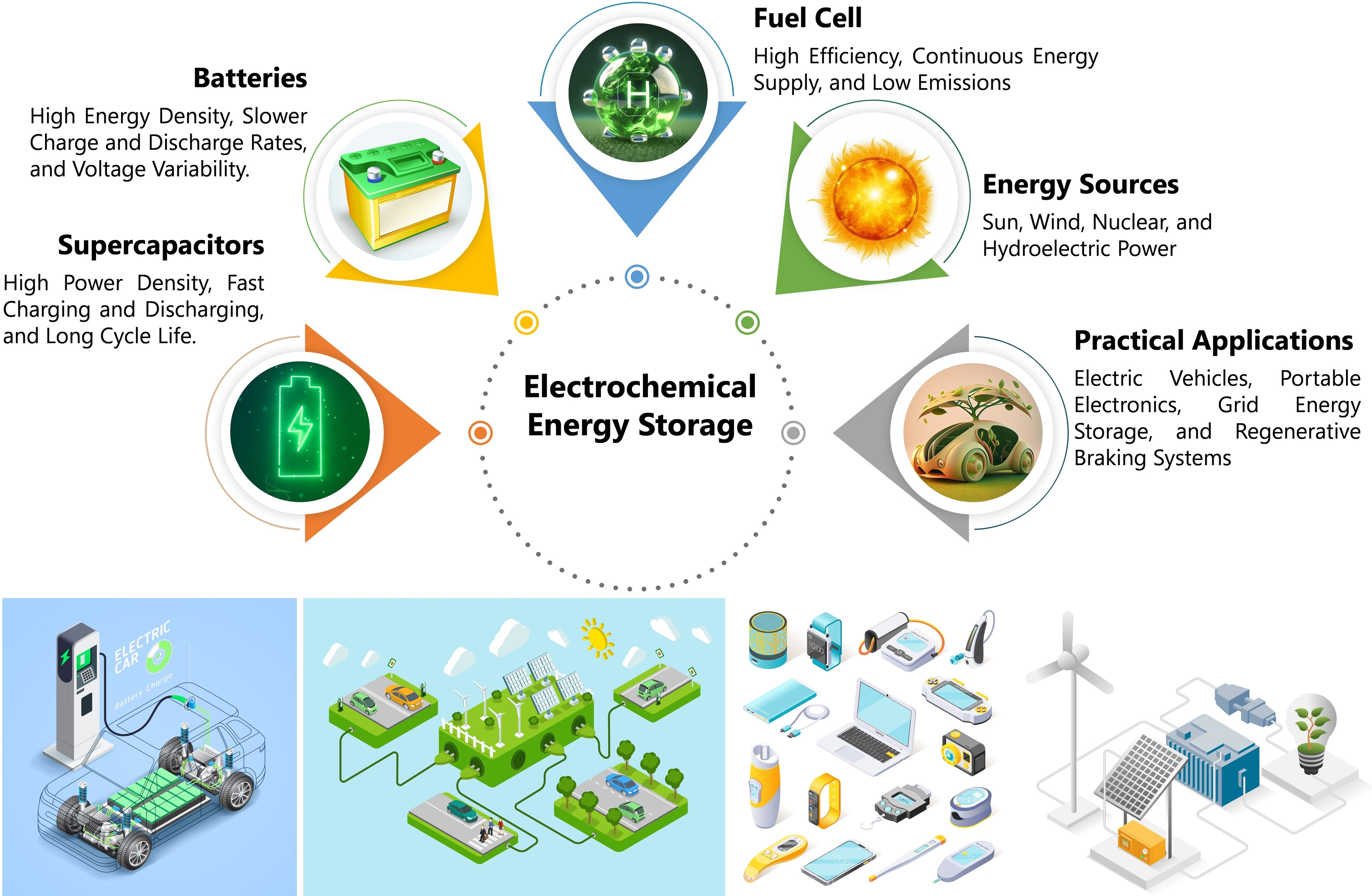
Energy conversion, consumption, and storage technologies are essential for a sustainable energy ecosystem. Energy storage technologies like batteries, supercapacitors, and fuel cells bridge the gap between energy conversion and consumption, ensuring a reliable energy supply. From ancient methods to modern advancements, research has focused on improving energy storage devices. Challenges remain, including performance, environmental impact and cost, but ongoing research aims to overcome these limitations. A special issue titled “Recent Advances in Electrochemical Energy Storage” presents cutting-edge progress and inspiring further development in energy storage technologies.
Reviews
Bioresource Polymer Composite for Energy Generation and Storage: Developments and Trends
- First Published: 30 March 2023
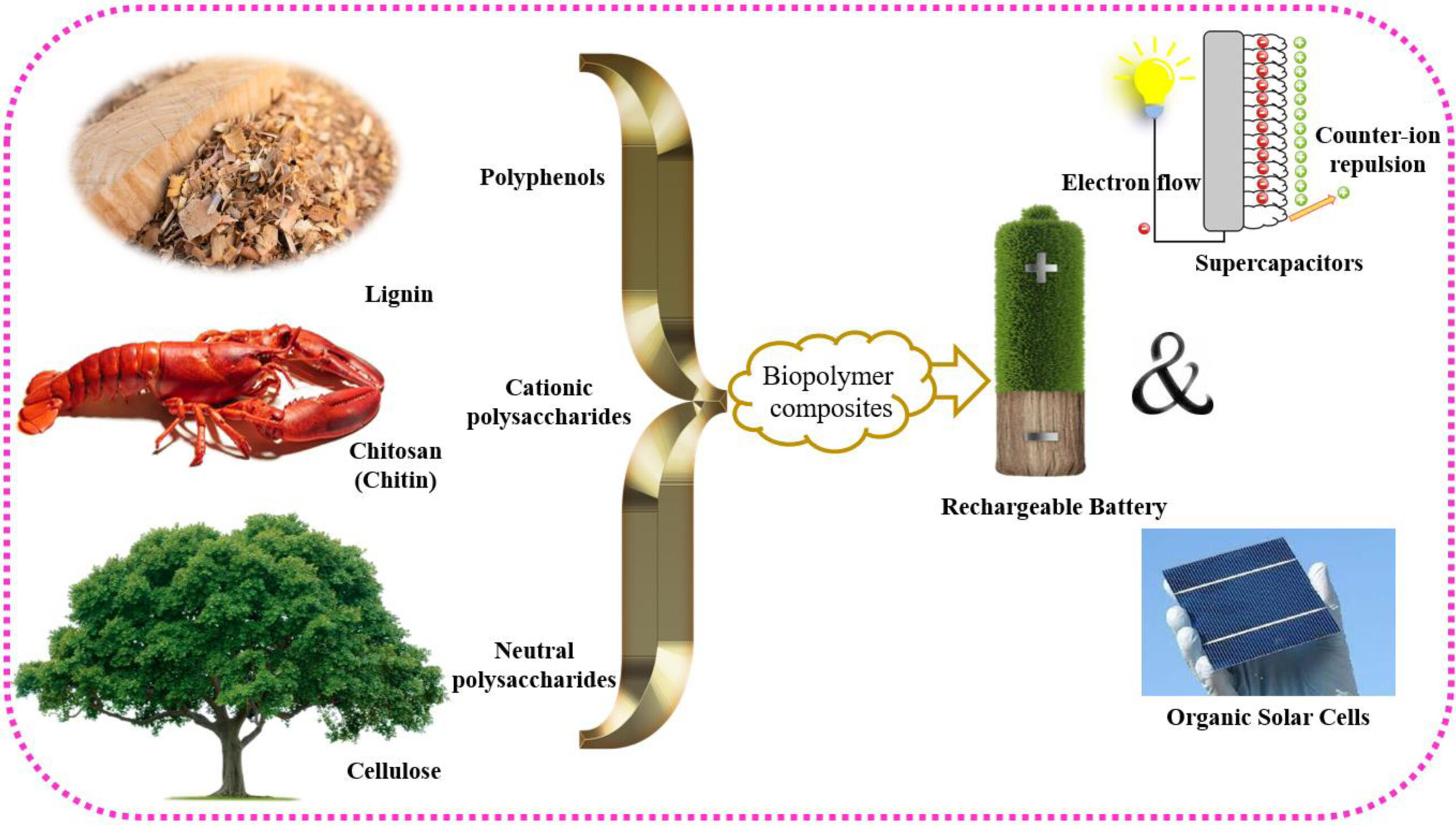
Biological raw materials such as lignin and chitin are very suitable for the development of energy generation and storage systems based on bio-based polymer composites (PCs). The development of bio-polymer composites for batteries, solar cells and supercapacitors that are more efficient, stable and cost-effective is of paramount importance.
Vanadium-Based Cathodic Materials of Aqueous Zn-Ion Battery for Superior-Performance with Prolonged-Life Cycle
- First Published: 02 March 2023
A Mechanistic Overview of the Current Status and Future Challenges of Aluminum Anode and Electrolyte in Aluminum-Air Batteries
- First Published: 17 February 2023
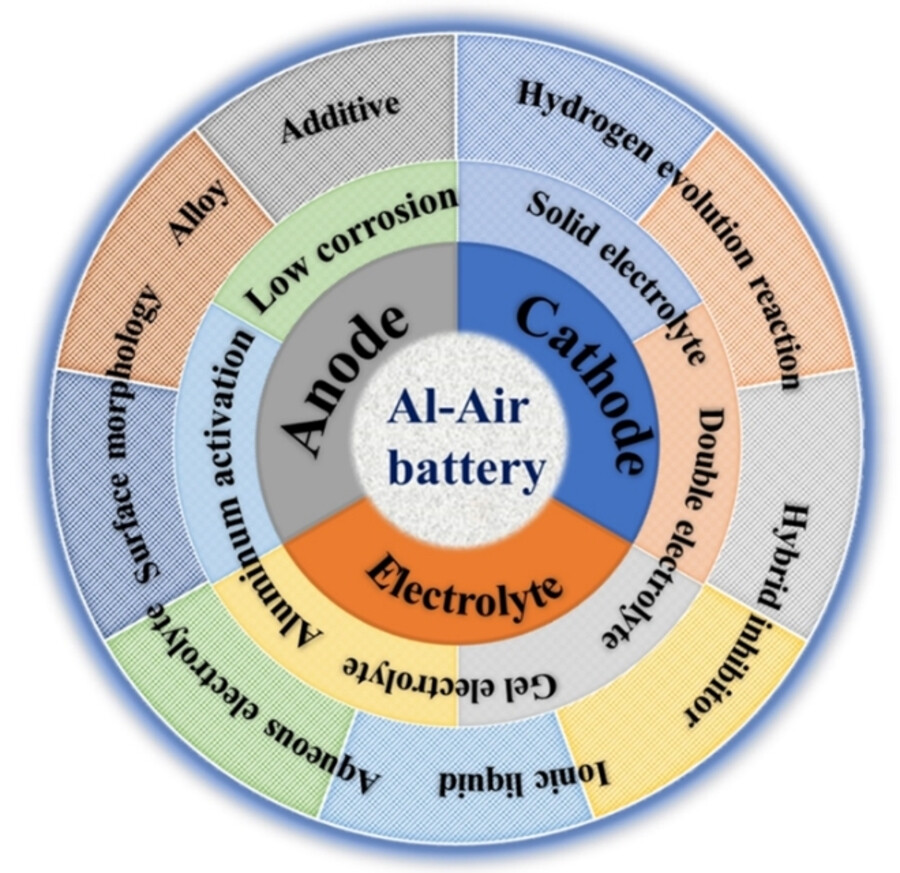
Aluminum-air batteries (AABs) are regarded as attractive candidates for use as an electric vehicle power source due to their high theoretical energy density. This review focuses on the challenges and most recent developments in AABs technology, including electrolytes and aluminum anodes, as well as their mechanistic understanding, and suggests potential future research areas for the advancement of AABs.
A Mechanistic Overview of the Current Status and Future Challenges in Air Cathode for Aluminum Air Batteries
- First Published: 03 April 2023
Resent Development of Binder-Free Electrodes of Transition Metal Oxides and Nanohybrids for High Performance Supercapacitors – A Review
- First Published: 17 May 2023
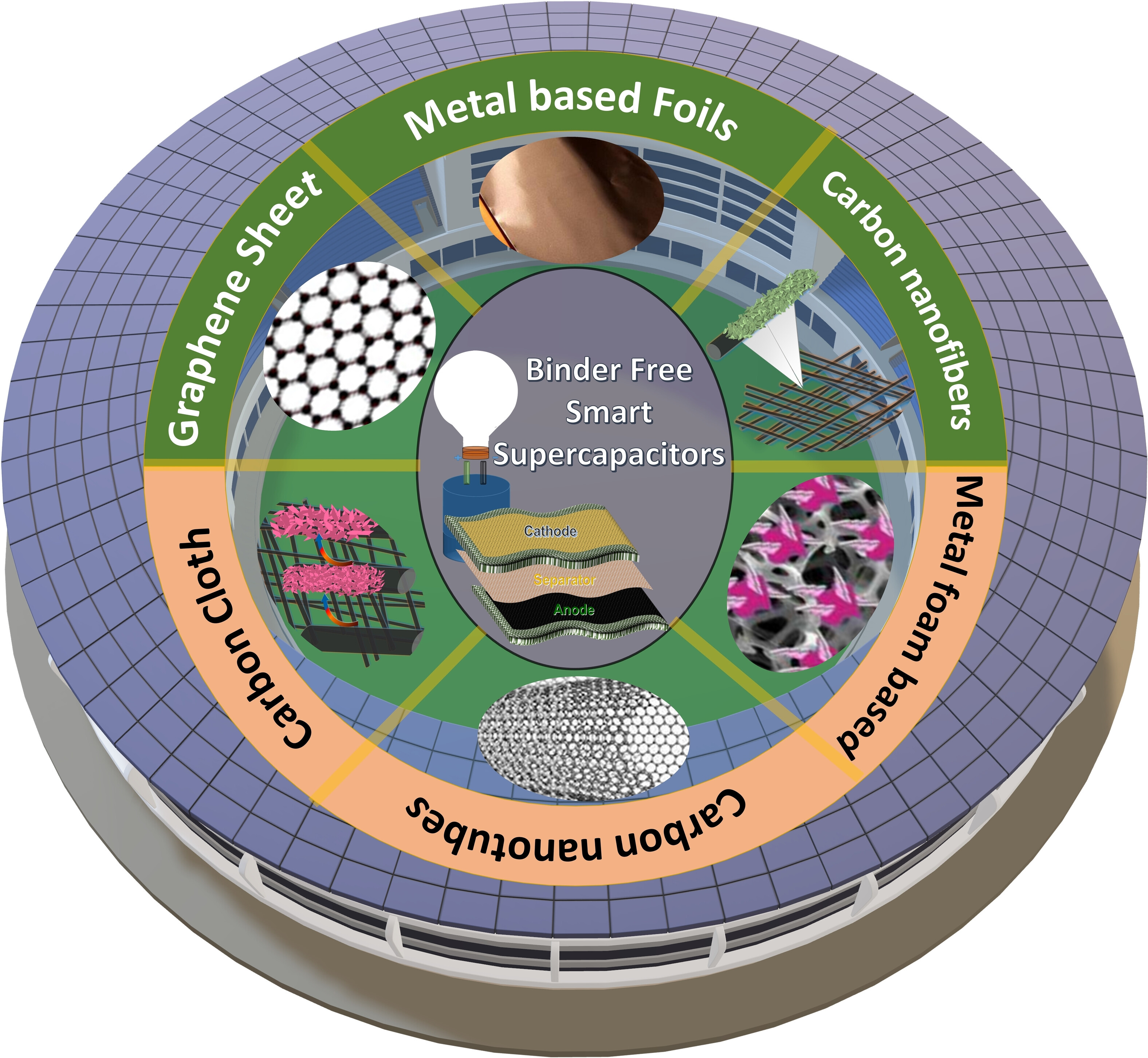
The concept of binder-free electrodes enables direct growth of the active material on the substrate and develops a good conducting contact between the active material and the current collector. Therefore a binder-free SCs electrodes based on transition metal oxides and composites displayed the significant importance owing the slurry-coated electrodes and devices.
Recent Development of Anion Exchange Membrane Fuel Cells and Performance Optimization Strategies: A Review
- First Published: 23 June 2023
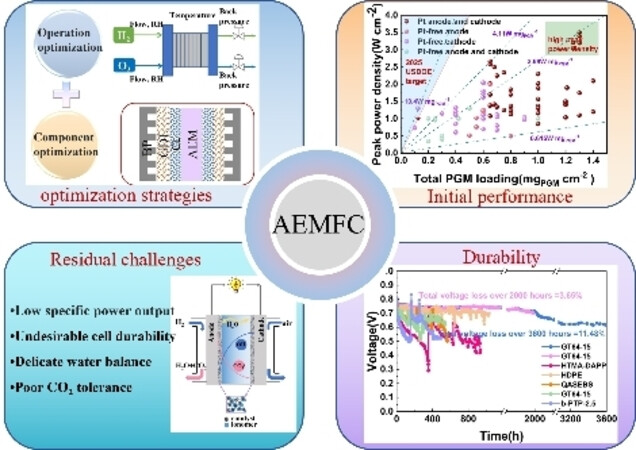
Anion exchange membrane fuel cells combine the advantages of conventional alkaline fuel cells and proton exchange membrane fuel cells. This paper reviews the performance data of H2-fueled AEMFCs since 2010 and summarizes already developed performance optimization schemes, which can provide useful insights for developing next-generation AEMFCs.
Evolution of Vanadium Redox Flow Battery in Electrode
- First Published: 05 May 2023
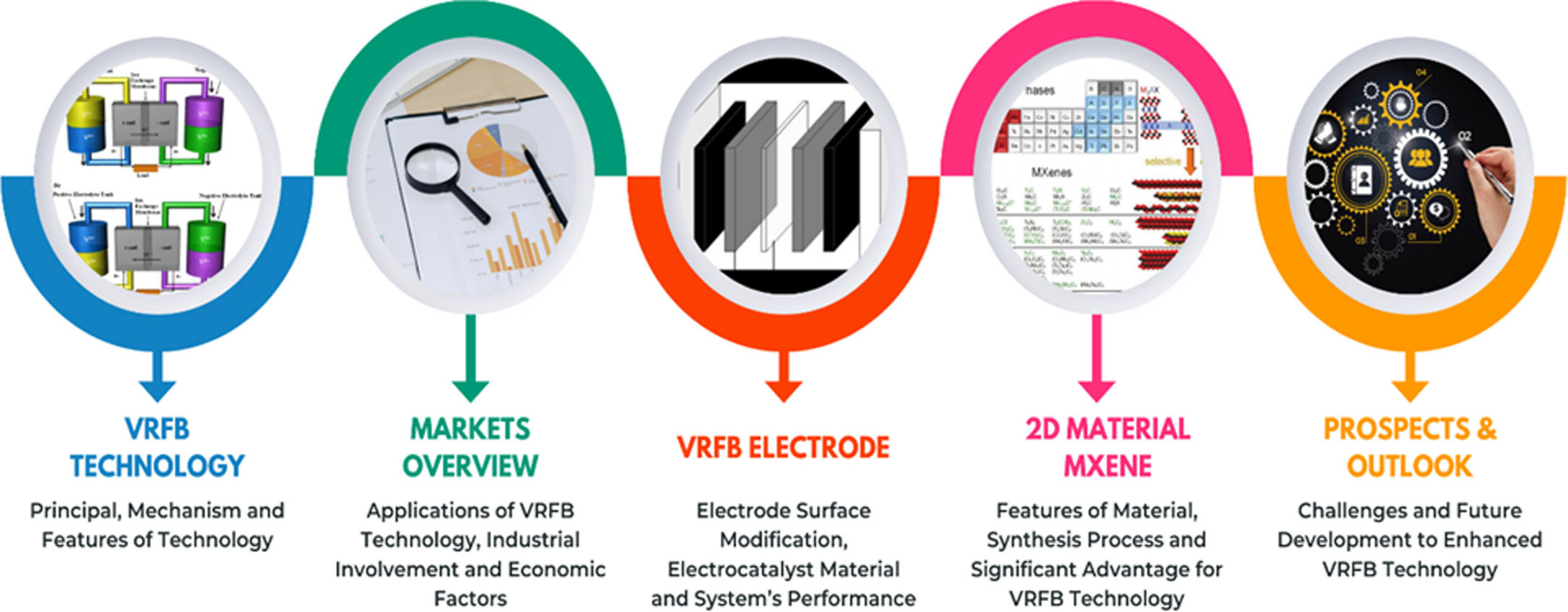
This review provides a comprehensive analysis of VRFB performance in carbon-based electrodes, potential applications, recent industrial involvement, and economic factors. The study covers the latest advancements in VRFB electrodes, including electrode surface modification, electrocatalyst materials, and the potential of two-dimensional material MXene to enhance electrode performance. The article concludes by reviewing the challenges and future development of VRFB technology.
Recent Progress in Polyaniline and its Composites for Supercapacitors
- First Published: 24 May 2023
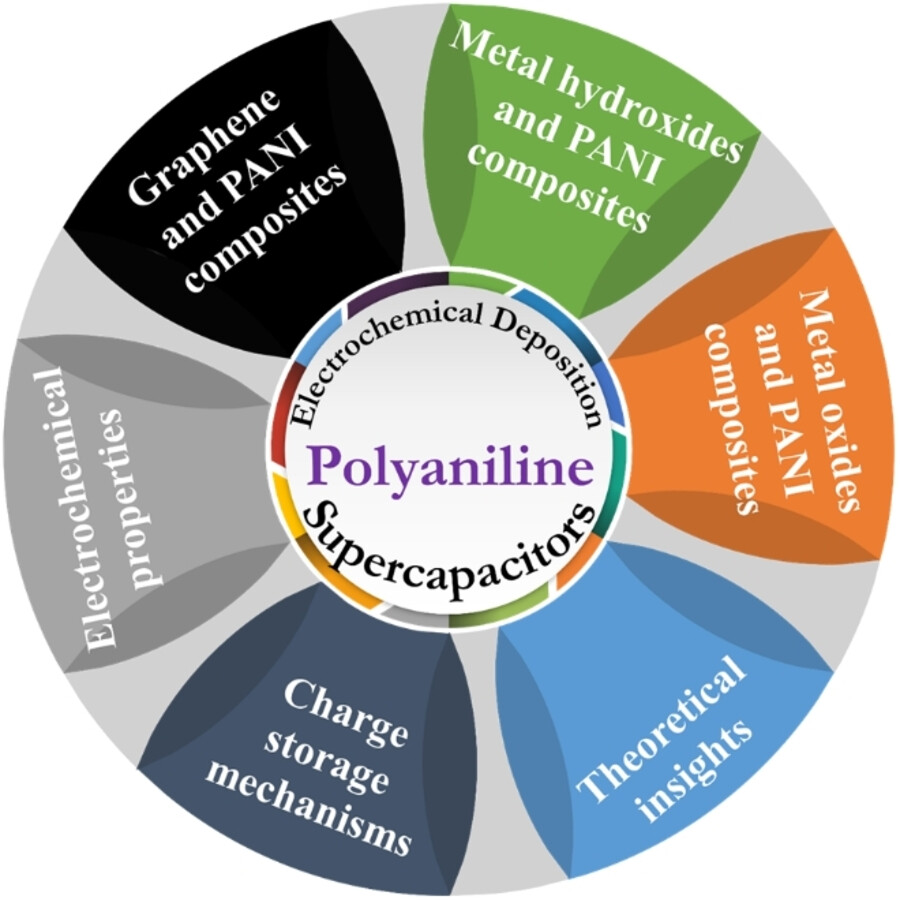
Polyaniline (PANI) has attracted the attention of nanotechnology researchers and is commonly used in high-performance supercapacitors due to its low-cost, simple synthesis, and high theoretical specific capacitance. Similarly, the nanocomposites of PANI with carbon and metals enhance supercapacitors′ overall performance. This review paper emphasizes synthesizing and implementing various PANI-based composites for supercapacitor applications.
Recent Advances, Challenges, and Future Perspectives of ZnO Nanostructure Materials Towards Energy Applications
- First Published: 30 May 2023

The development of numerous ZnO nanostructure-based composite materials for efficient sensors, supercapacitors, antimicrobial agents, and biosensors applications has been largely used in health diagnosis, pharmaceutical evaluation, food hygiene, environmental approach, biomedical implementation, and decontamination of the environment monitoring and healthcare fields in a broad scales.
Shape-Controlled First-Row Transition Metal Vanadates for Electrochemical and Photoelectrochemical Water Splitting
- First Published: 23 June 2023
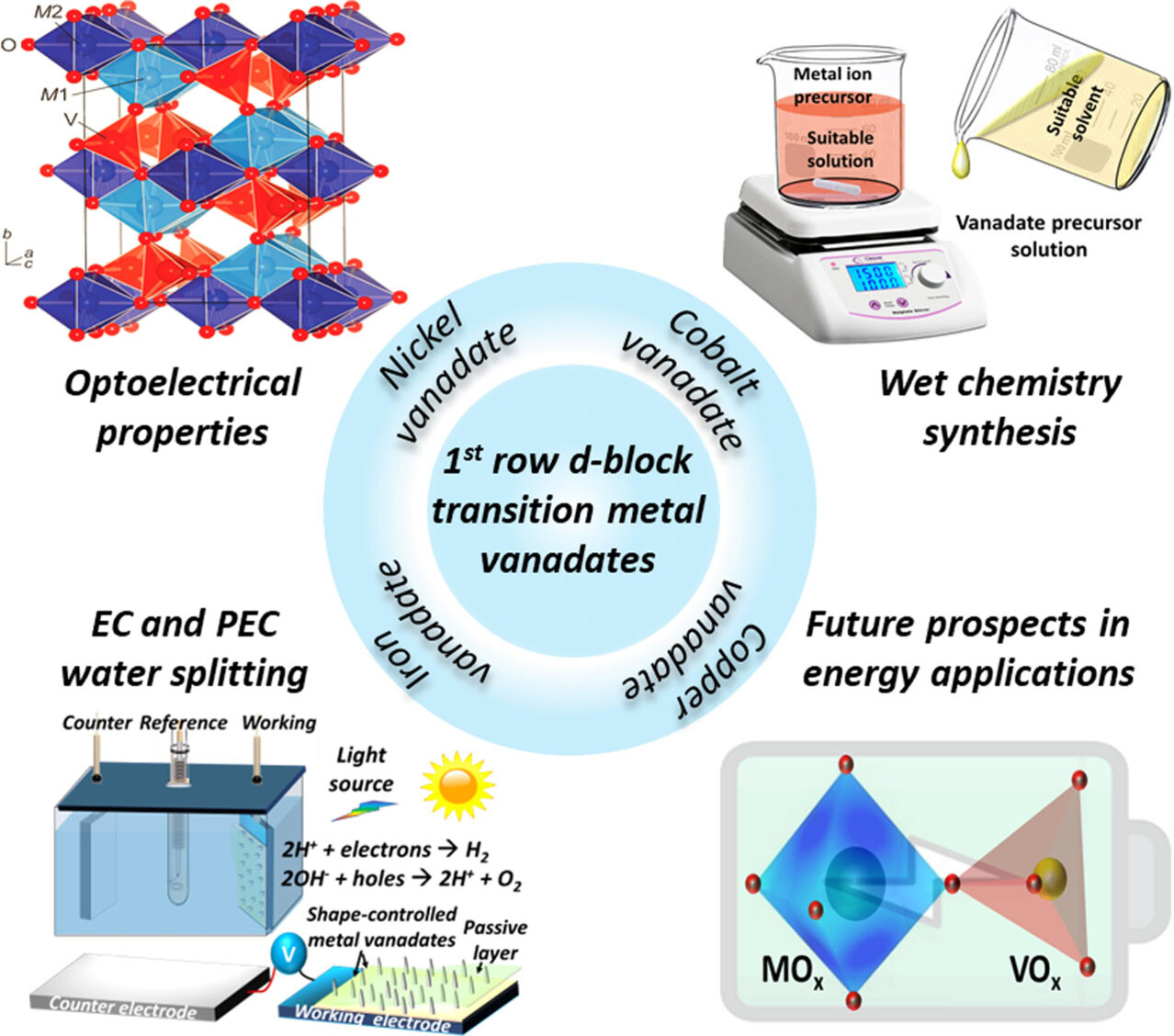
1st-row Transition metal vanadates (t-MVs) exhibit favorable energy storage and generation characteristics and suitable for diverse electrochemical (EC) and photoelectrochemical (PEC) water splitting (WS) applications. Especially, the controlled 1D and 2D morphologies of t-MVs have gained significant attention in WS technology and discuss in detail in this article.
Synthesis of Electrical Conductive Metal-Organic Frameworks for Electrochemical Applications
- First Published: 18 September 2023
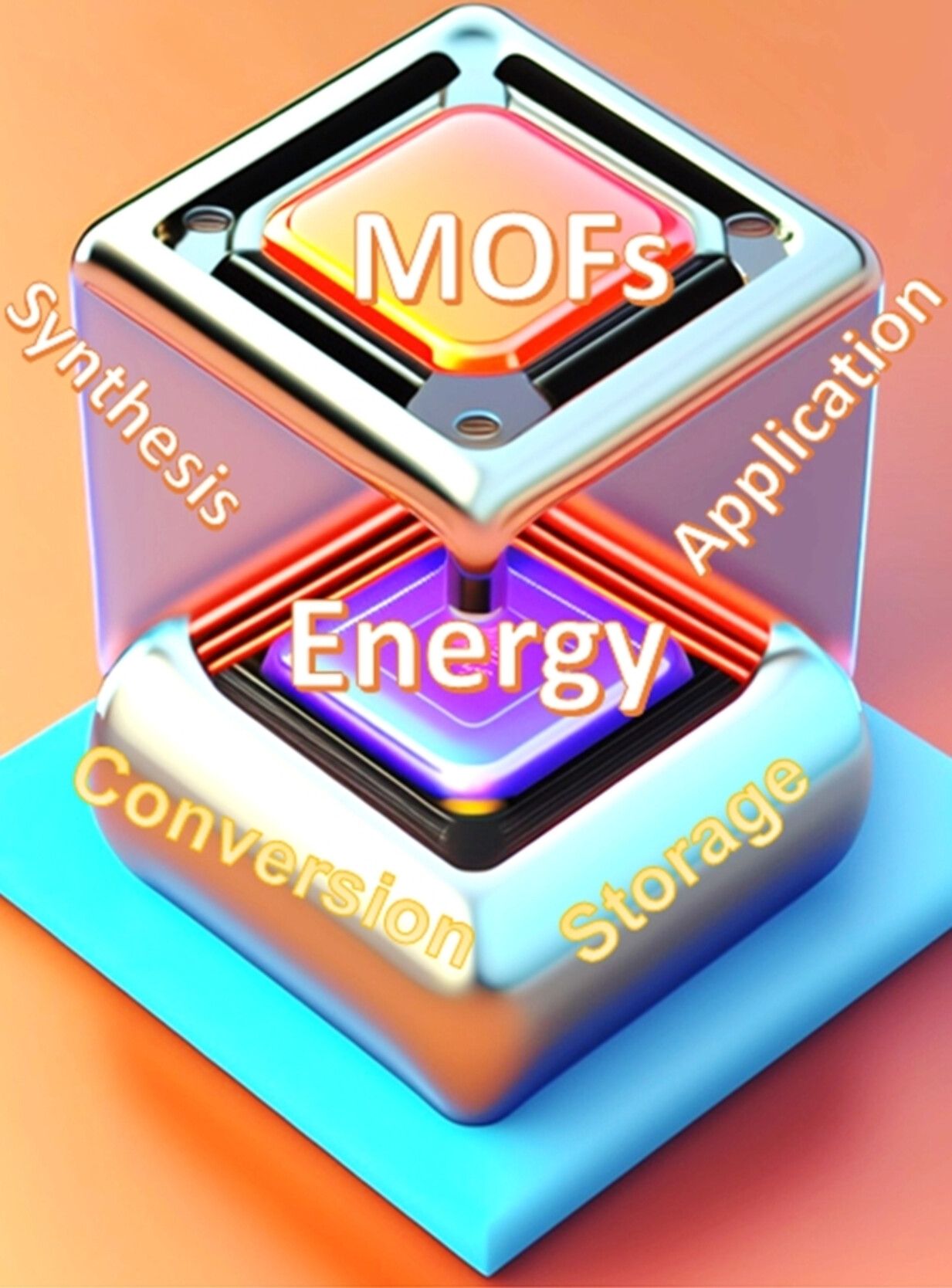
The unique π–π accumulation and π-d conjugate structure of 2D-Electrical Conductive MOFs offer them an excellent electrical conductivity with special characteristic features as high specific surface area, large porosity, rich and adjustable structure, diverse pore channels as well as confined multiple active sites of MOFs materials, which made MOFs more potential and advantages in efficient applications in sensing, energy storage, energy conversion, electronic devices and other fields.
Recent Advances of Transition Metal Dichalcogenides-Based Materials for Energy Storage Devices, in View of Monovalent to Divalent Ions
- First Published: 26 June 2023
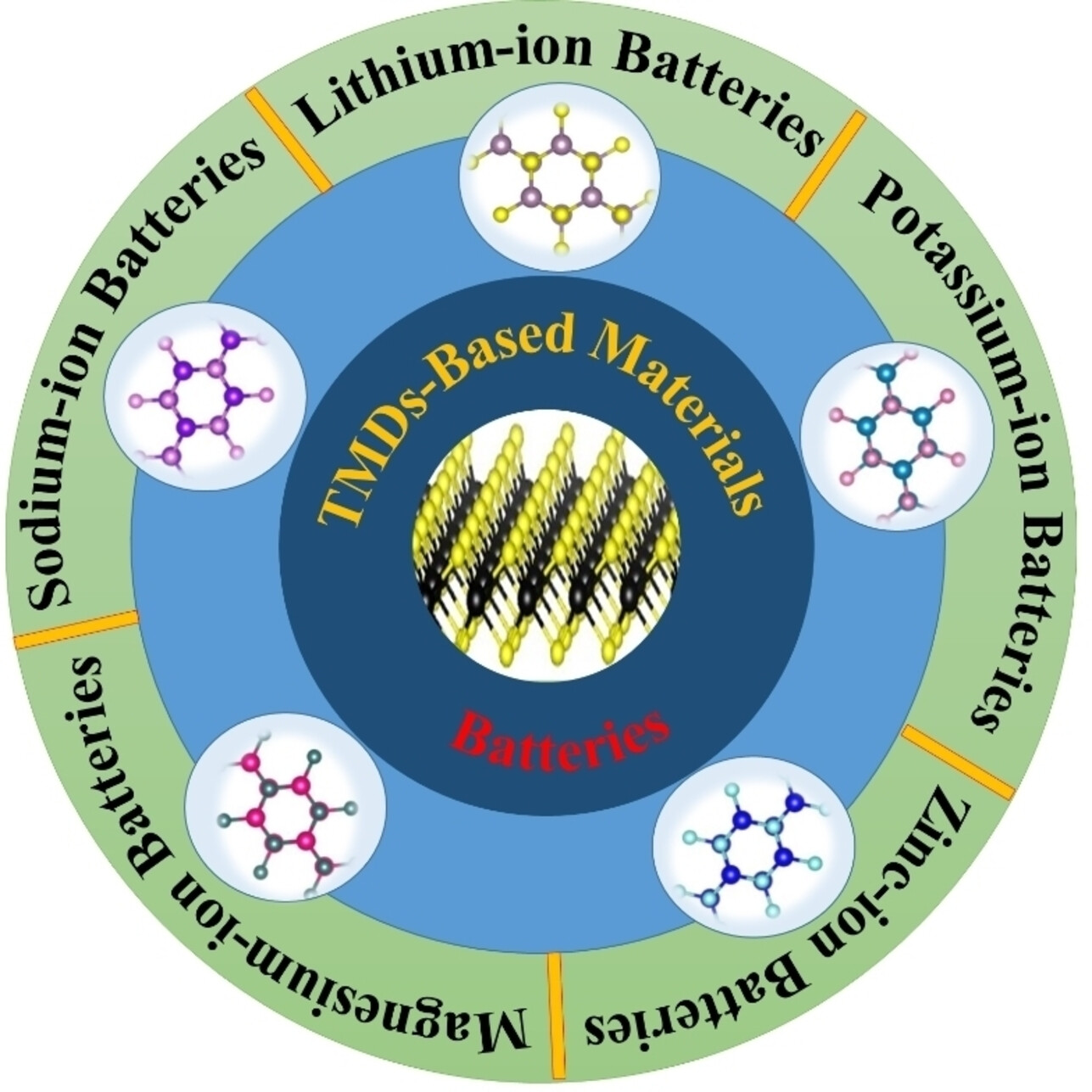
In this review work, 2D TMDs-based materials and their physical, chemical, morphological, and electrochemical properties and challenges are discussed for RBs. 2D TMDs-based cathode, anode, and electrolyte materials for RBs comprehensively studied and compared with their recent development. In conclusion, the progress and strategies to improve the performance of 2D TMDs for RBs are discussed.
Carbon Nanosheets-Based Supercapacitor Materials: Recent Advances and Prospects
- First Published: 26 July 2023
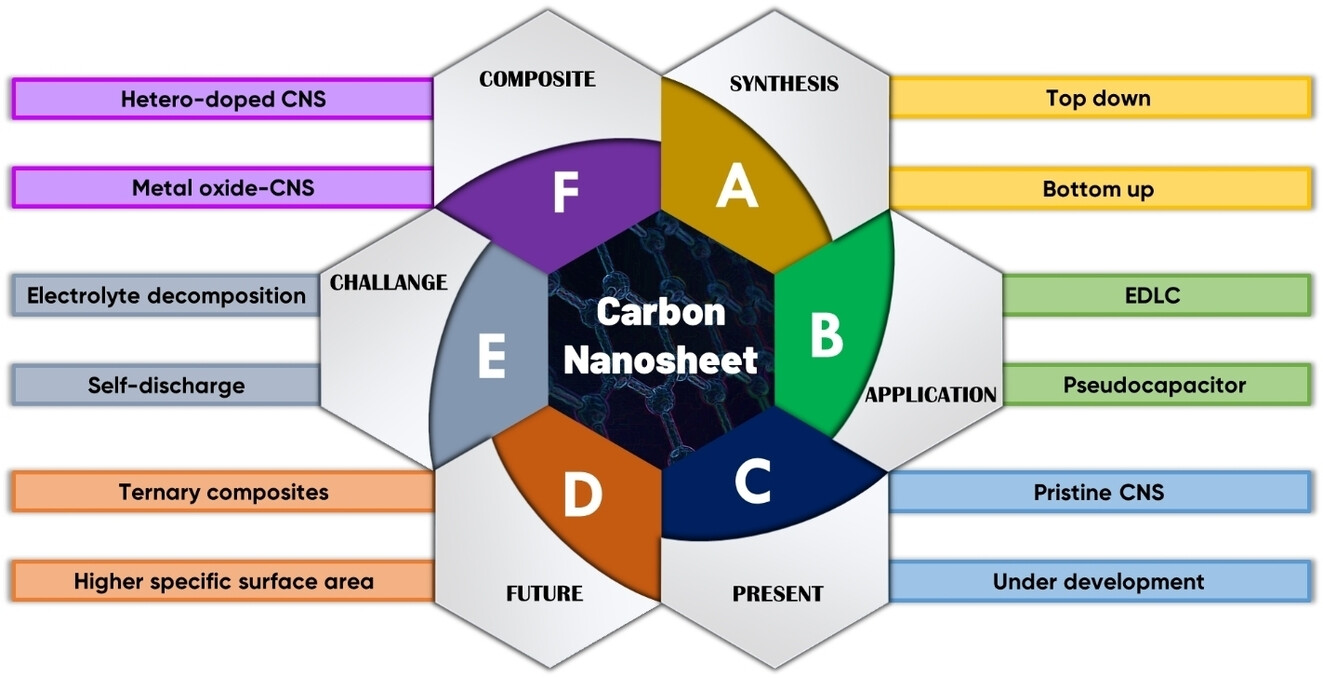
Our reliance on fossil fuels for economic and industrial prosperity has resulted in their depletion since the industrial revolution. As a result, scientists have concentrated on renewable energy sources, energy storage devices, and environmentally acceptable technologies. Supercapacitors appear to be a potential solution to the growing demand for high power density, energy density, and cost-effective energy storage. Carbon nanosheets (CNSs) play an important role in generating the high energy electrodes required for supercapacitors. This article explores the latest developments and prospects of CNSs-based electrodes in supercapacitor applications.
Chemistry Aspects and Designing Strategies of Flexible Materials for High-Performance Flexible Lithium-Ion Batteries
- First Published: 12 July 2023

In the pursuit of flexible Li-ion batteries, the selection of suitable materials is crucial for the development of flexible electrodes and electrolytes. This review is focused on the flexibility evaluation parameters, potential candidates for flexible electrode materials, such as carbon-based materials, COFs, MOFs, and MXene, solid polymers electrolytes, solid electrolytes, and their cell design.
Recent Advances on Nitrogen-Doped Porous Carbons Towards Electrochemical Supercapacitor Applications
- First Published: 15 August 2023
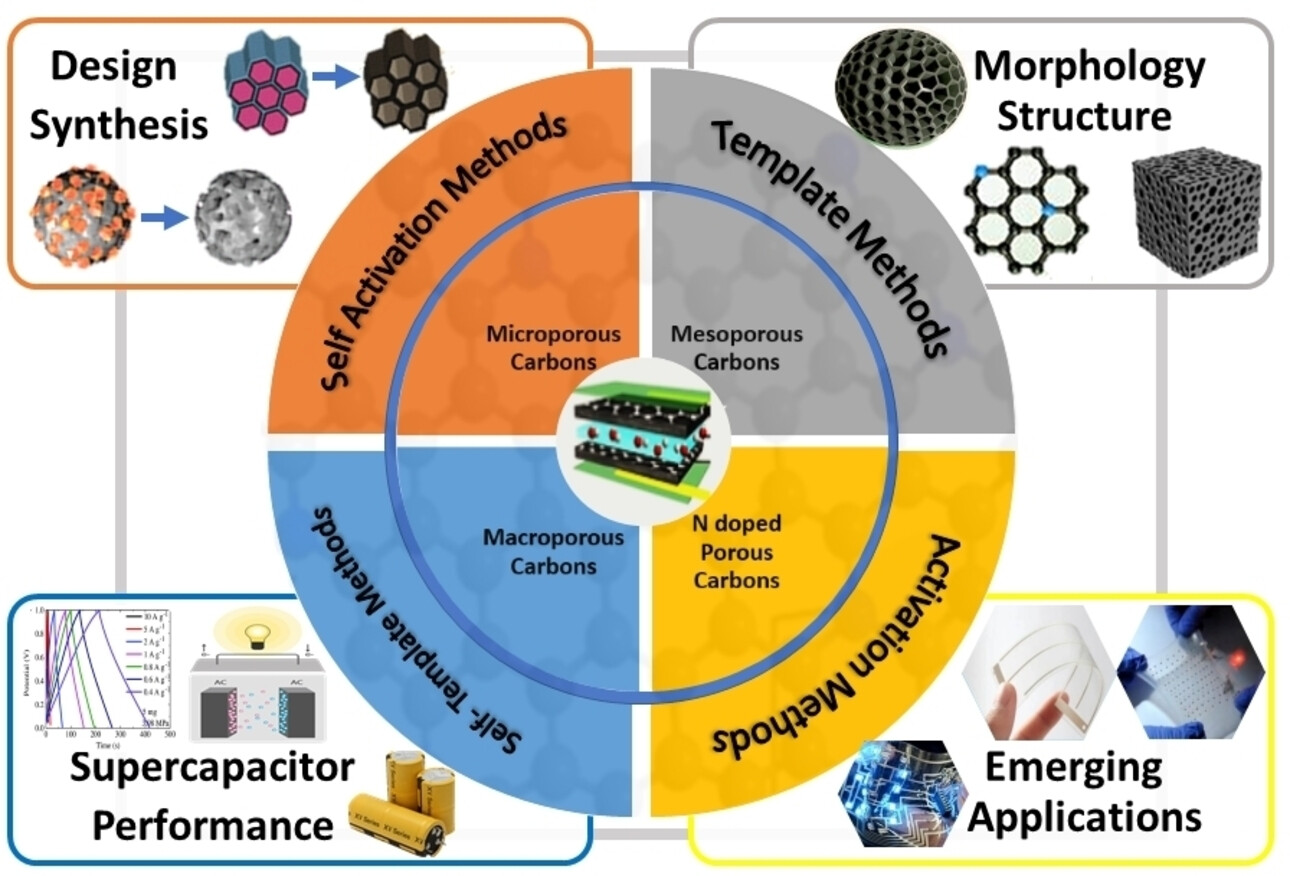
This review comprehensively explores nitrogen-doped porous carbon (NPC) materials as high-performance supercapacitor electrodes to meet global energy demand. It highlights recent advancements in NPC synthesis, emphasizing enhanced electrochemical performance due to nitrogen-carbon synergies. Challenges and future prospects are discussed, offering insights for electrochemical energy storage researchers.
Energy Application of Graphene Based Membrane: Hydrogen Separation
- First Published: 25 July 2023
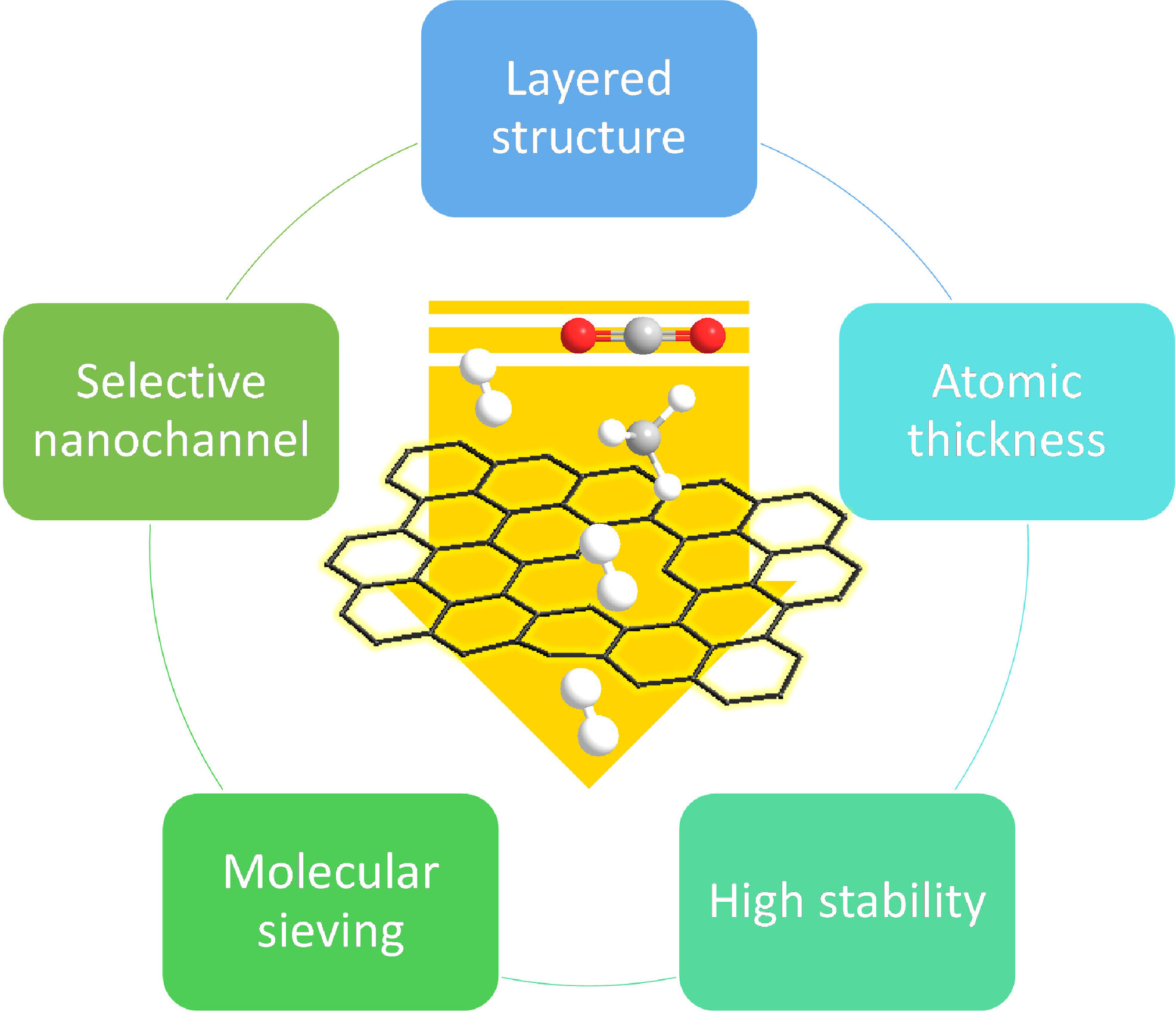
The study focuses on investigating the efficiency of hydrogen gas purification and its associated energy consumption. Specifically, researchers are exploring carbon-based membranes, with a particular emphasis on graphene-based materials, due to their potential for achieving highly pure hydrogen gas separation. The findings from this study will be crucial in guiding future research directions, aiming to optimize the performance of graphene-based membranes for more energy-efficient and effective hydrogen gas separation processes.
Development of Membranes and Separators to Inhibit Cross-Shuttling of Sulfur in Polysulfide-Based Redox Flow Batteries: A Review
- First Published: 22 August 2023
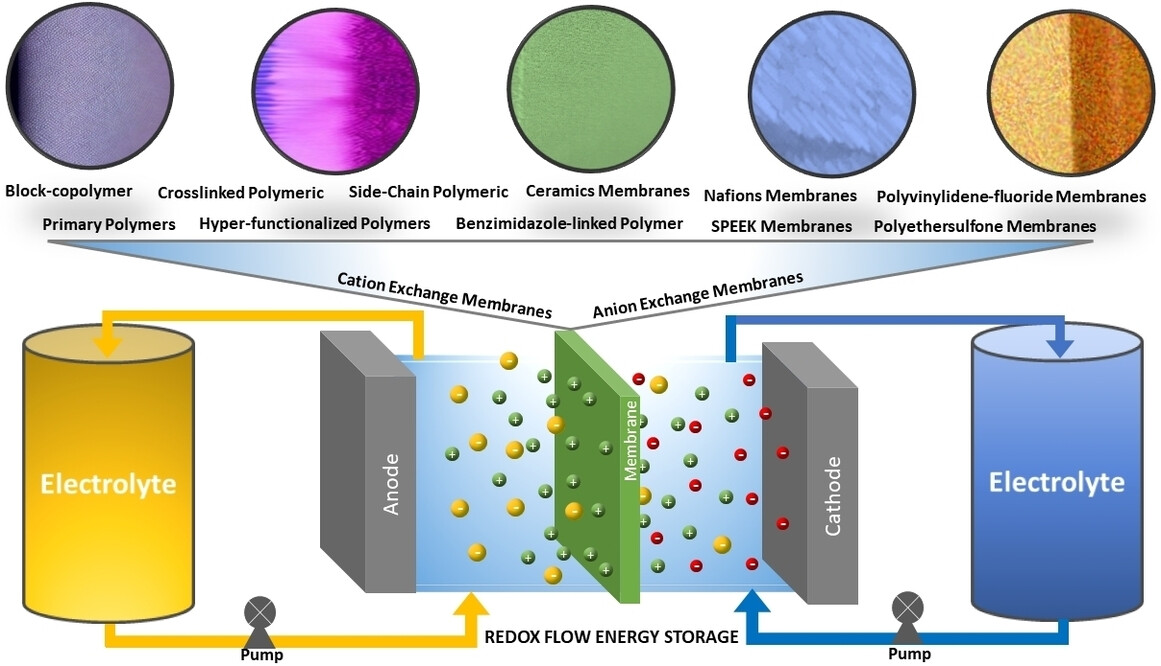
This review article focuses on the latest developments to improve the separators/membranes and overcome the cross-shuttle effect associated with them. Various categories of ion exchange membranes used in polysulfide redox flow batteries and lithium-sulfur batteries are discussed. A critical analysis is proposed to highlight their efficiency in mitigating sulfur cross-shuttling.
A Comprehensive Review on Perovskite Solar Cells Integrated Photo-supercapacitors and Perovskites-Based Electrochemical Supercapacitors
- First Published: 29 August 2023
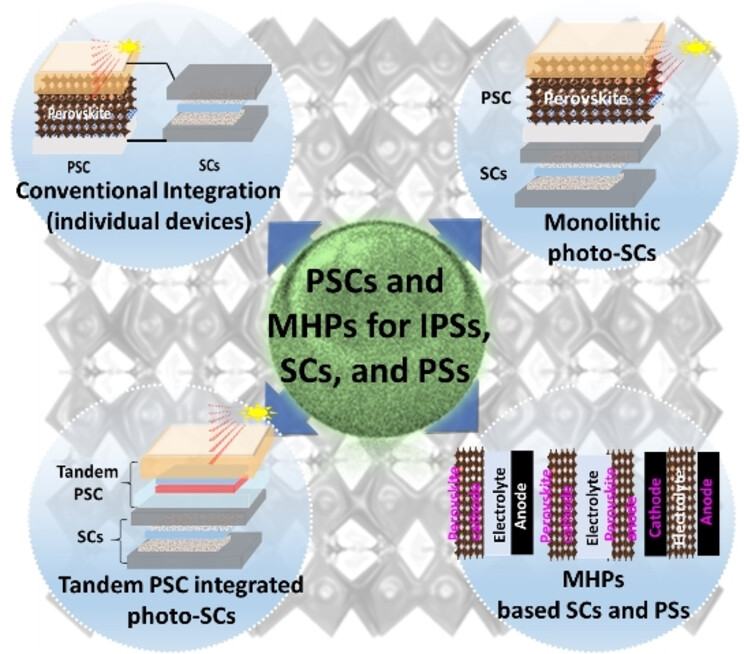
The remarkable advancement in photon-to-electron conversion efficiency of metal halide perovskites (MHPs) solar cells has made them highly suitable for integrating with numerous next-generation electronic and optoelectronic technologies. Additionally, the excellent optoelectronic properties with mixed electronic and ionic conductivity of MHPs have widened their application as electrode/electrolyte materials for supercapacitors (SCs) and photo-supercapacitors (PSs). This review comprehensively summarizes the research progress in PSC-integrated PSs and MHPs-based SCs and PSs.
Rational Design of Hollow Structural Materials for Sodium-Ion Battery Anodes
- First Published: 21 September 2023

Hollow structural materials have shown great potential in energy storage and conversion devices. They can buffer the volume change during electrode cycling and provide short paths for ion transportation. Detailed various synthetic methods based on the type of hollow structures for sodium-ion battery anodes, including nanoboxes, nanospheres, yolk-shell structures, and more complicated structures are critically evaluated.
Anti-Freezing Electrolytes in Aqueous Multivalent Metal-Ion Batteries: Progress, Challenges, and Optimization Strategies
- First Published: 22 August 2023
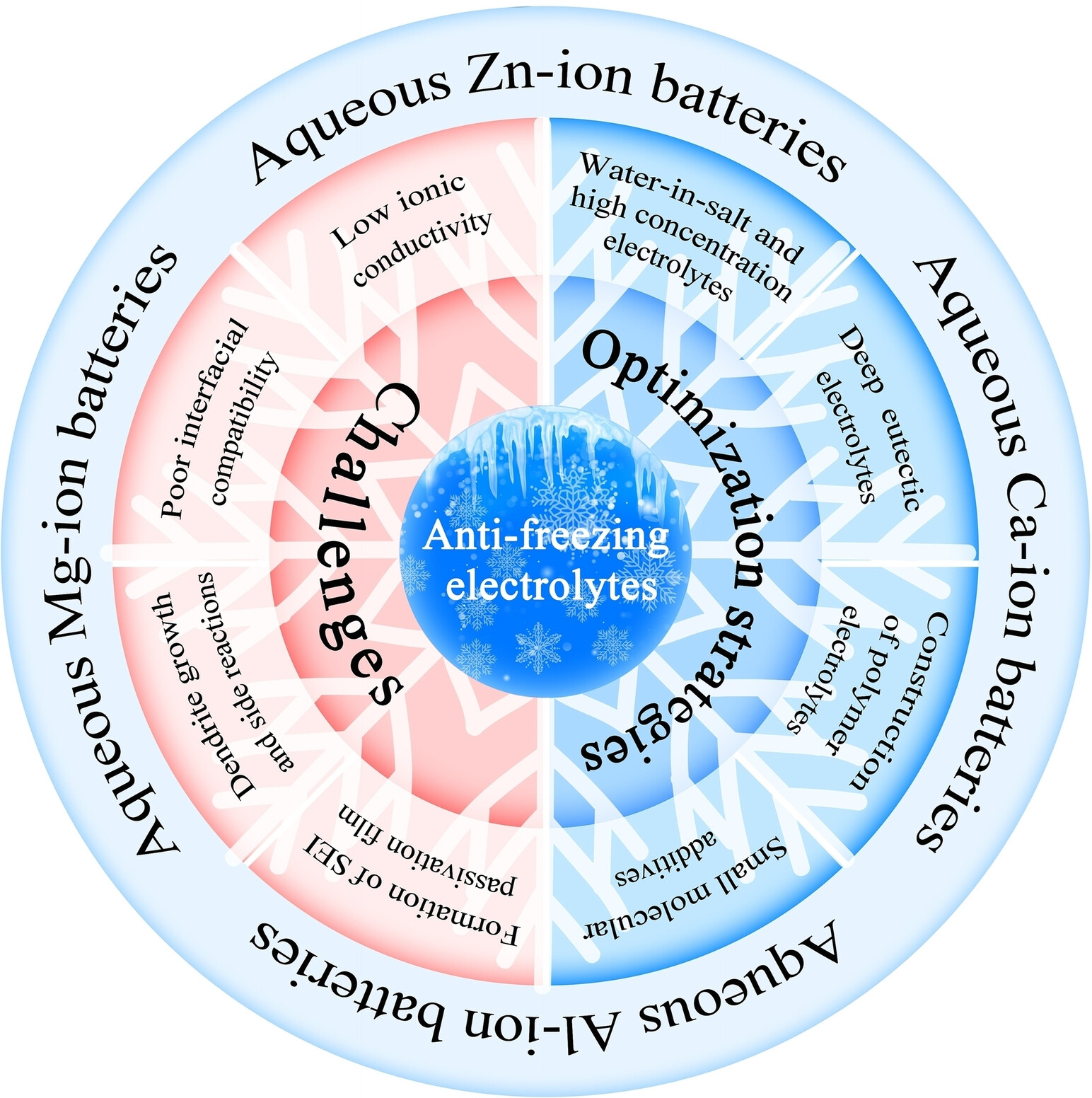
This review provides a comprehensive overview of the challenges encountered by anti-freezing electrolytes in aqueous multivalent metal-ion batteries operating in low environmental temperatures, as well as the optimization strategies employed to overcome these challenges. It is essential to closely monitor the research progress of aqueous multivalent metal-ion batteries in the realm of low temperature energy storage.
Cobalt Oxide-Based Electrocatalysts with Bifunctionality for High-Performing Rechargeable Zinc-Air Batteries
- First Published: 31 August 2023
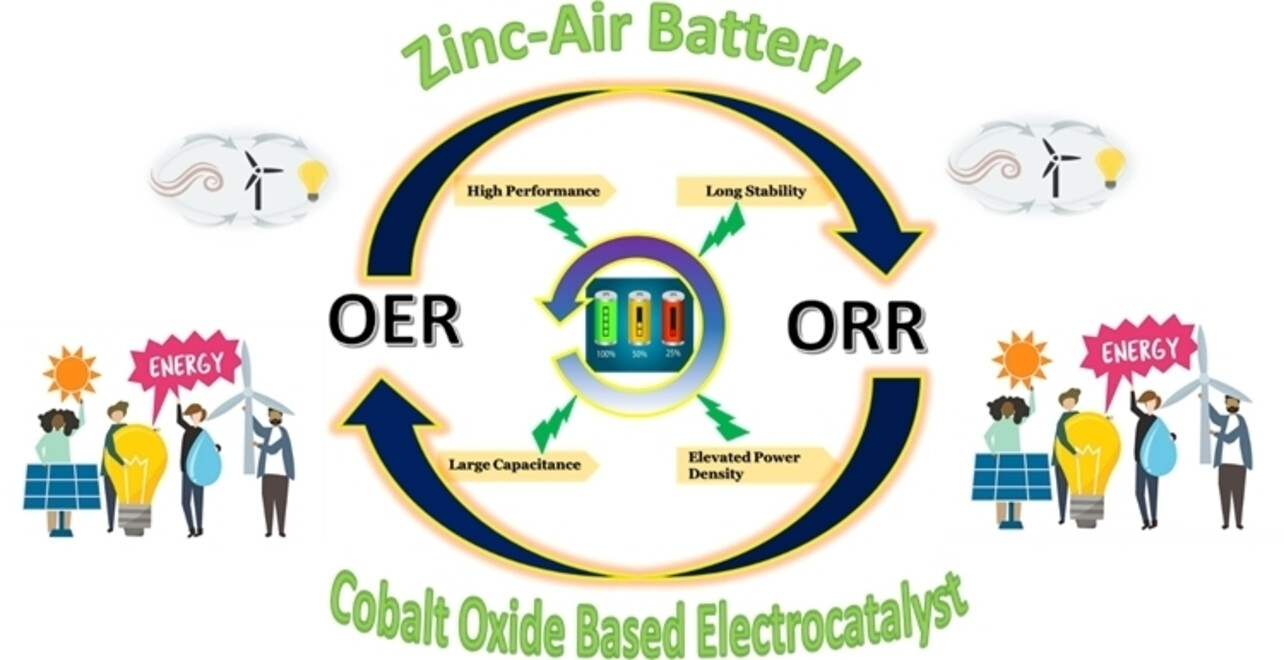
This comprehensive review article focuses on cobalt oxide-based electrocatalysts for high-performance rechargeable zinc-air batteries (ZABs). The increasing demand for efficient energy storage, the importance of the air electrode in ZABs, and the need for bifunctional catalysts have been summarized. It provides an overview of ZAB configuration, catalyst selection criteria, and evaluation parameters. The review discusses the latest advancements in cobalt oxide-based electrocatalysts, their morphological variations, and their role in energy storage. The challenges and prospects for the future development of these electrocatalysts for high-performing ZABs are also addressed.
Recent Developments in Electrodeposition of Transition Metal Chalcogenides-Based Electrode Materials for Advance Supercapacitor Applications: A Review
- First Published: 05 September 2023
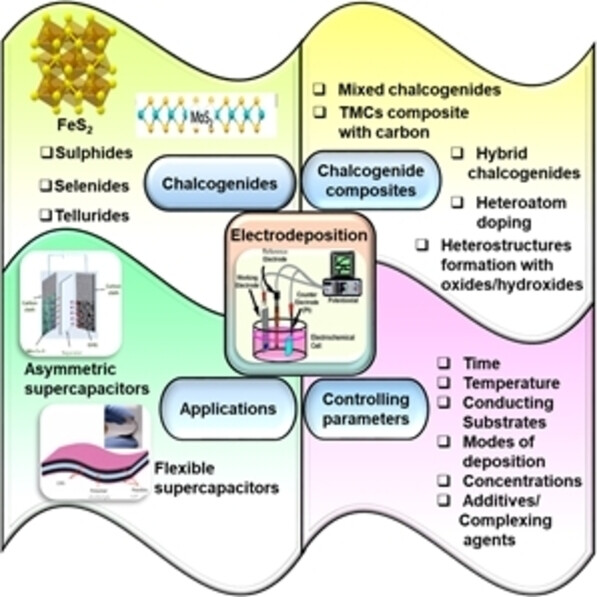
This review focuses on the electrodeposition-mediated synthesis of thin films of single/multinary transition metal chalcogenides for advanced supercapacitor applications. Different composites of chalcogenides and the effect of varying different deposition parameters for tuning the supercapacitor performance have been discussed. Lastly, existing challenges and perspectives in this area have been highlighted.
Advance Technologies in Biodegradable Flexible Solid-State Supercapacitors: A Mini Review on Clean and Sustainable Energy
- First Published: 20 September 2023

Solid-state supercapacitors (SSS) have congregated researchers and industries because of unique features such as flexible, lightweight, compact size, easy to handle. The wide range of temperature and potential window is bonus benefit for its practical applications. This also solves the safety issues in the liquid electrolyte based supercapacitors. The current collector, mechanically and chemically stable electrodes and semisolid or solid electrolytes plays a vital role in fabricating SSS. Apart from that, the biodegradable SSS are blessings for the sustainable environment as technically advance and eco-friendly. In this regard, we have focused on the latest advancement in SSS including its fabrication, various electrodes and electrolytes used to develop SSS. This review also discuss the pros and cons on SSS and future opportunities of these in energy market.
Recent Advances in the Development of Sustainable Composite Materials used as Membranes in Microbial Fuel Cells
- First Published: 31 August 2023
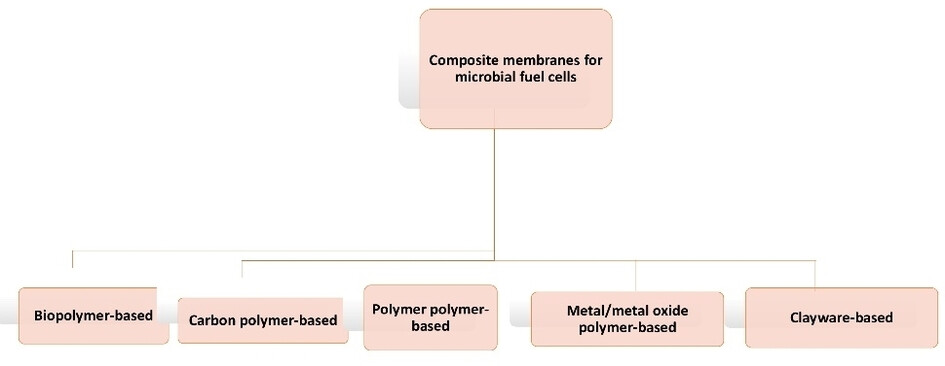
This review is a comprehensive outlook on fabricating composite membranes (CM) for microbial fuel cells (MFC). The CM have been categorised as biopolymer-based, carbon polymer-based, polymer polymer-based, metal polymer-based and clayware-based. Critical analysis in terms of strengths, weakness, opportunities, challenges of the application of CM in MFC have also been discussed.
Transition Metals-Based Water Splitting Electrocatalysts on Copper-Based Substrates: The Integral Role of Morphological Properties
- First Published: 19 October 2023
Recent Developments on Electroactive Organic Electrolytes for Non-Aqueous Redox Flow Batteries: Current Status, Challenges, and Prospects
- First Published: 11 September 2023
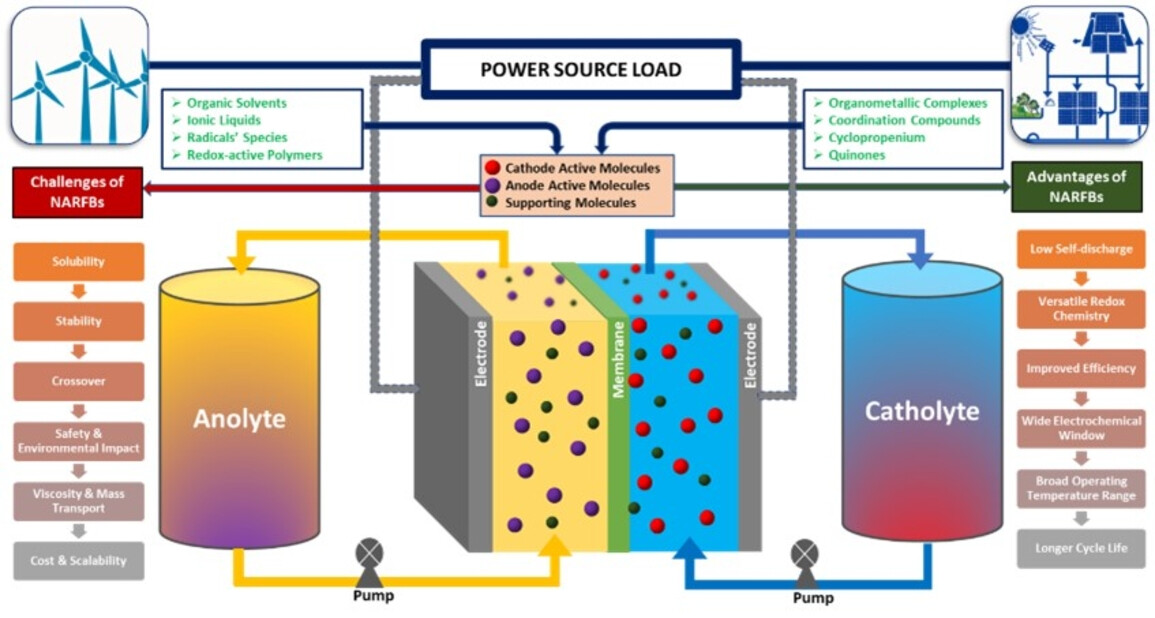
In this review article, a critical analysis is provided on the design of electroactive organic molecules, their physiochemical and electrochemical properties, as well as various organic solvents used in non-aqueous redox flow batteries (NARFBs). Different redox-active organic materials, such as metal-based coordination complexes, quinones, radicals, and polymers explored during 2012–2022 are discussed and the current challenges of NARFBs are summarized.
2D MXenes Nanosheets for Advanced Energy Conversion and Storage Devices: Recent Advances and Future Prospects
- First Published: 27 September 2023
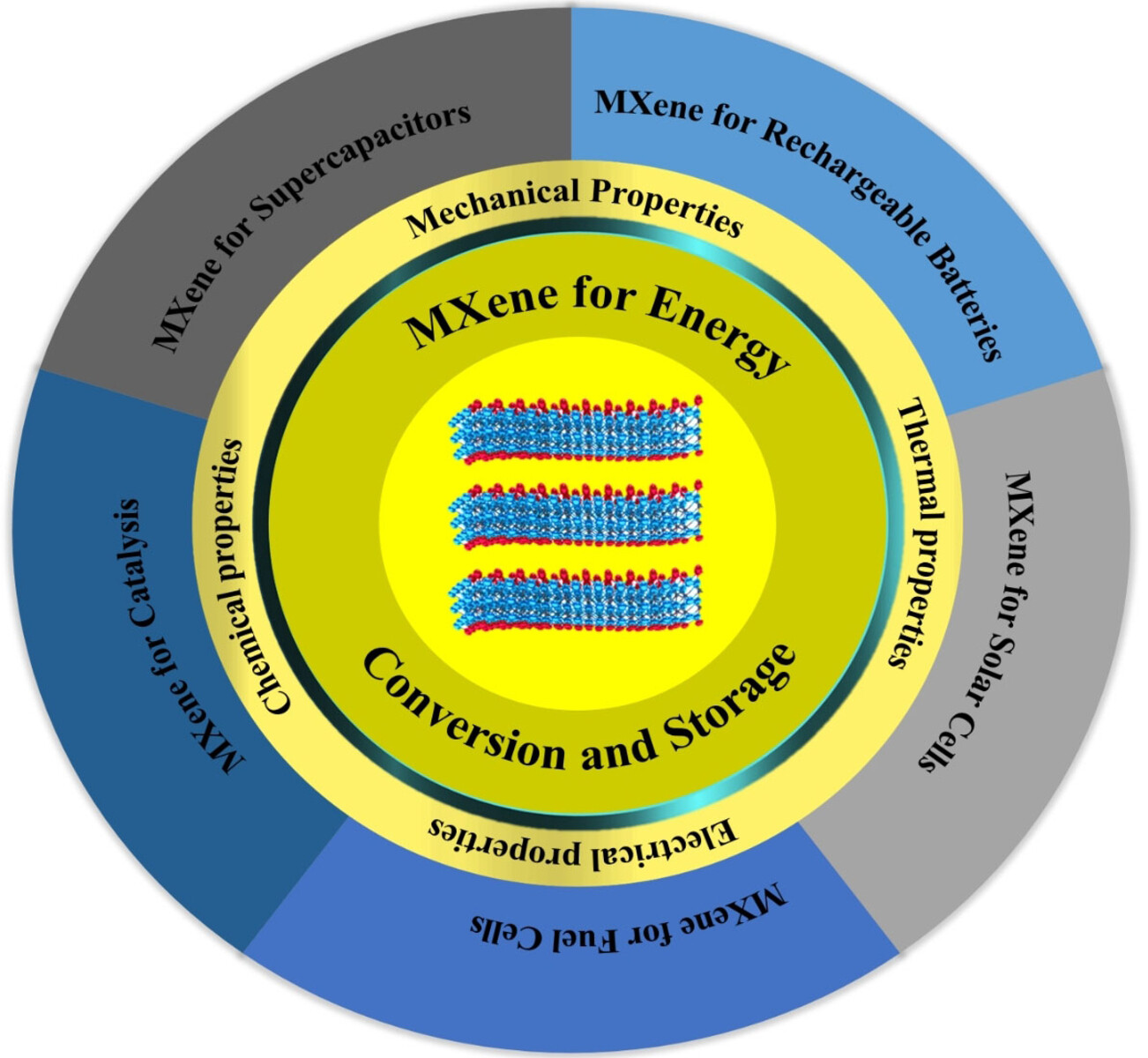
After a brief overview of energy conversion and storage, the advances in MXenes with various properties are reviewed. Comprehensive comparison of MXenes for various energy conversion and storage are conducted, focusing on mechanism, cost, technological maturity, and current progress. Finally, future prospects to improve MXenes performance in energy conversion and storage are also highlighted.
High Energy Density Supercapacitors: An Overview of Efficient Electrode Materials, Electrolytes, Design, and Fabrication
- First Published: 22 November 2023
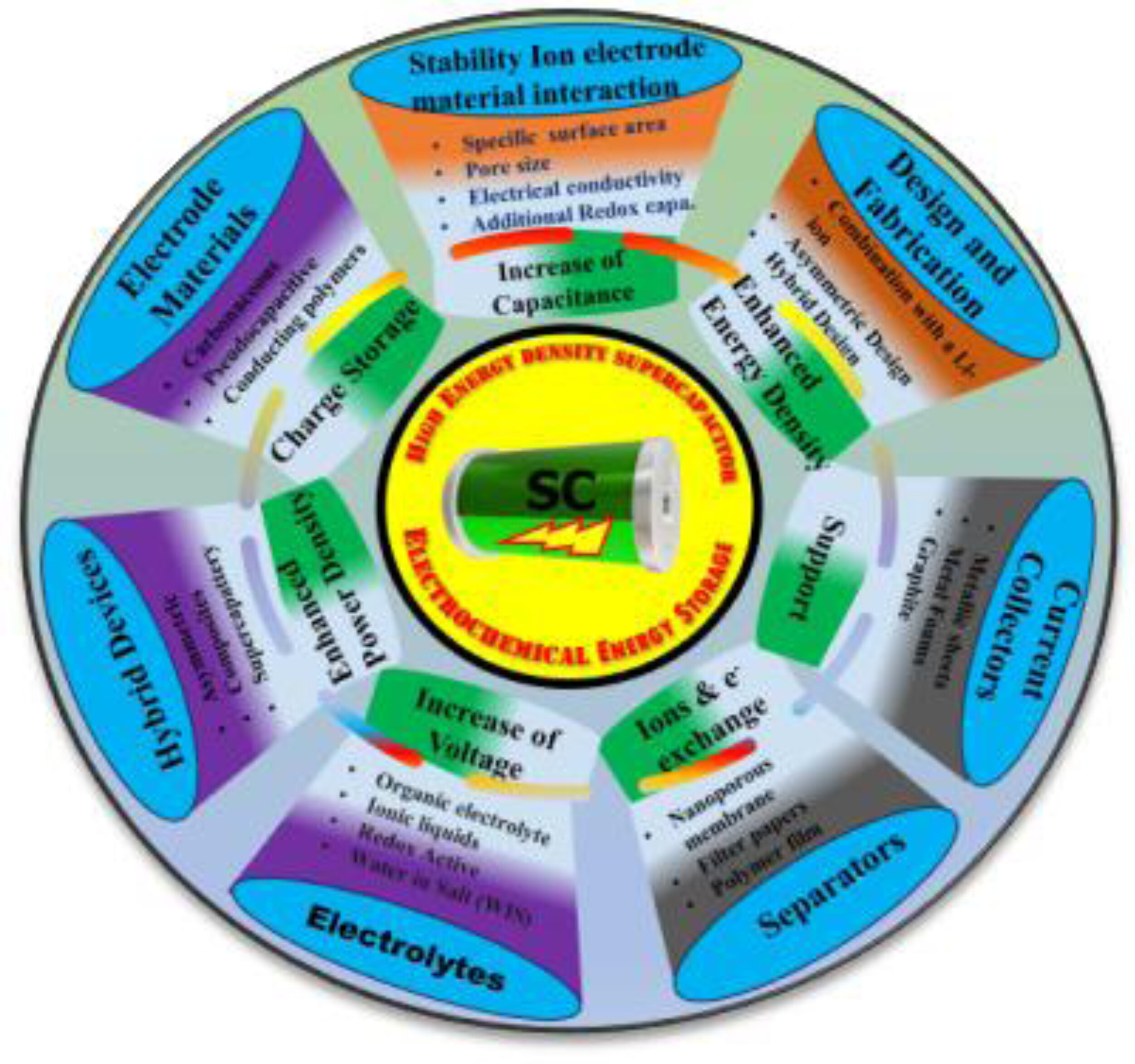
This review gives the insights to enlarge the energy density of a supercapacitor device by doing numerous modifications in electrode materials, electrolytes, design, and fabrication. Overall, it suggests what combinations of electrode materials, electrolytes and designs should be taken into consideration for a high energy density supercapacitor.
Metal Negatrode Supercapatteries: Advancements, Challenges, and Future Perspectives for High-Performance Energy Storage
- First Published: 05 December 2023
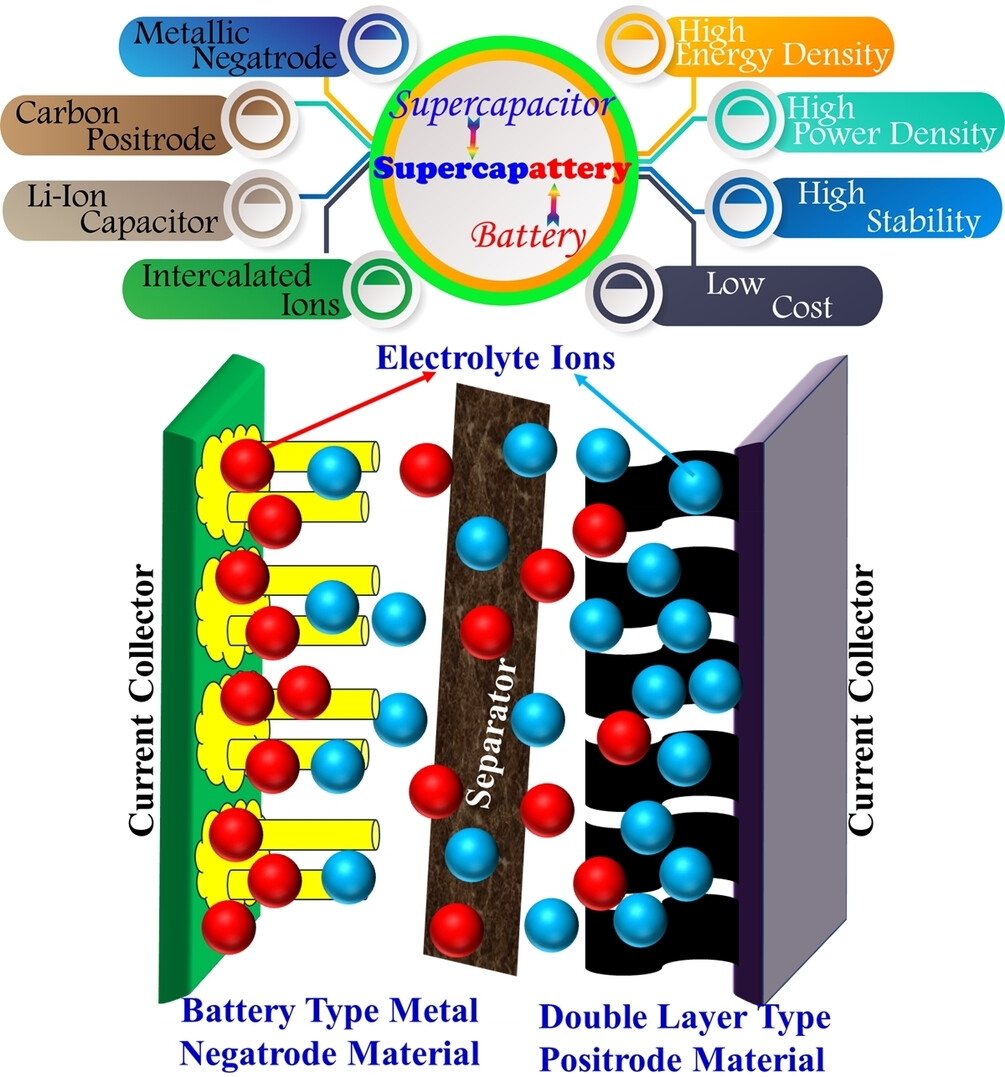
Metal negatrode supercapatteries (MNSCs) are a promising technology that integrates the functionalities of batteries and supercapacitors. MNSCs utilize metal or metal-rich negatrodes for higher energy densities and improved stability. This review provides a comprehensive analysis of the various aspects of MNSCs for energy storage applications, including design, fabrication, optimization, materials, and challenges.
Advancements in Perovskite-Based Cathode Materials for Solid Oxide Fuel Cells: A Comprehensive Review
- First Published: 07 November 2023
Recent Theoretical and Experimental Advancements of Aluminum-Sulfur Batteries
- First Published: 24 October 2023
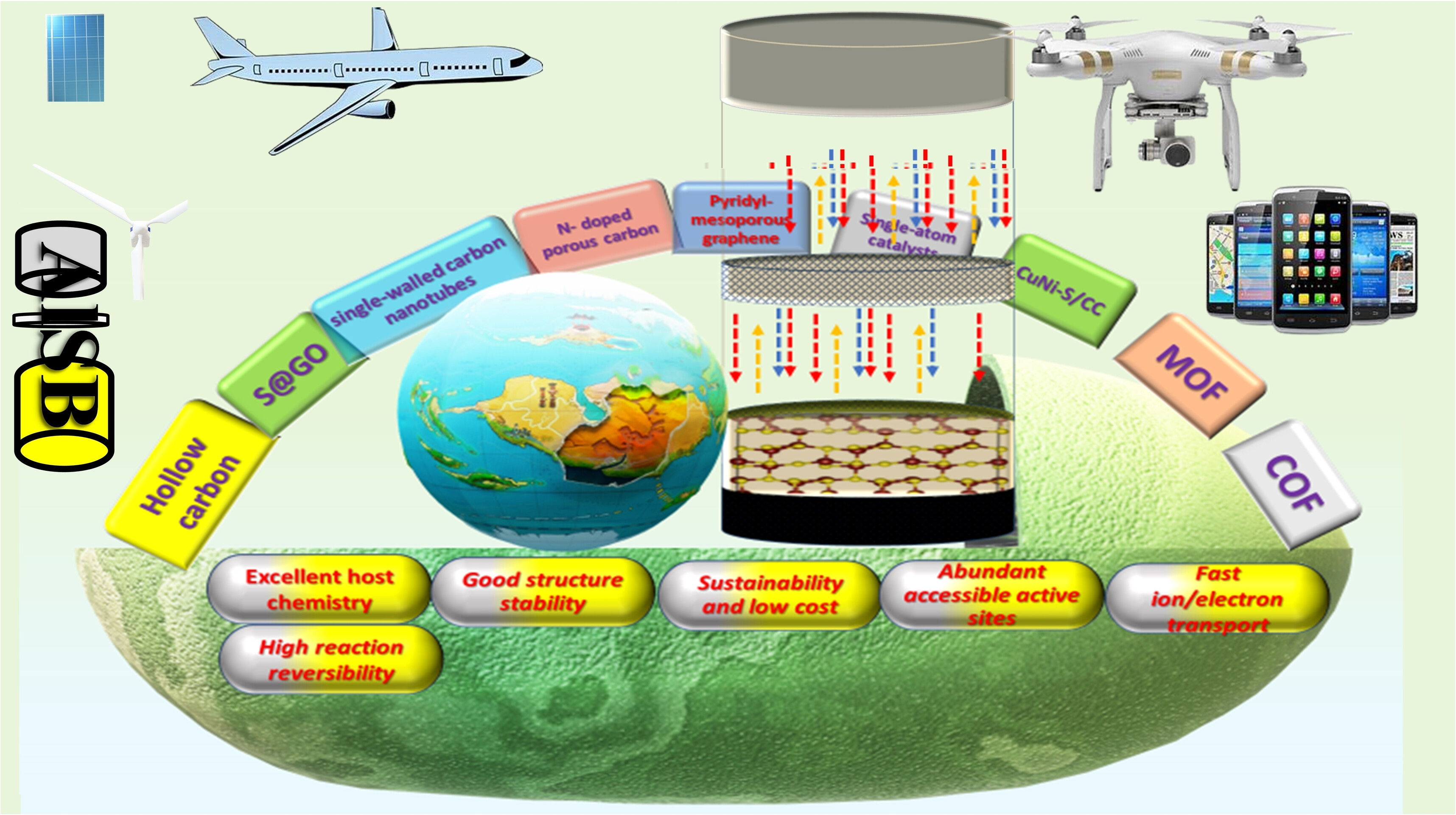
Aluminum-sulfur batteries have become the most prominent battery technology due to their high theoretical capacity, eco-friendliness, economics, and abundance of aluminum as well as sulfur. Recently, some research work has been done on the various types of carbon used to host sulfur as well as control the aluminum polysulfide shuttling effect. Further, quick progress has been made to find suitable electrolytes theoretically and experimentally, and some success has been achieved with ionic liquid electrolytes. Although these findings are significant, the formation of oxide layers on aluminum, low cyclic stability, and high cost of electrolytes need to be resolved as well to make aluminum-sulfur batteries a competitor to lithium-ion batteries.
Recent Development of Electrolytes for Aqueous Organic Redox Flow Batteries (Aorfbs): Current Status, Challenges, and Prospects
- First Published: 27 November 2023
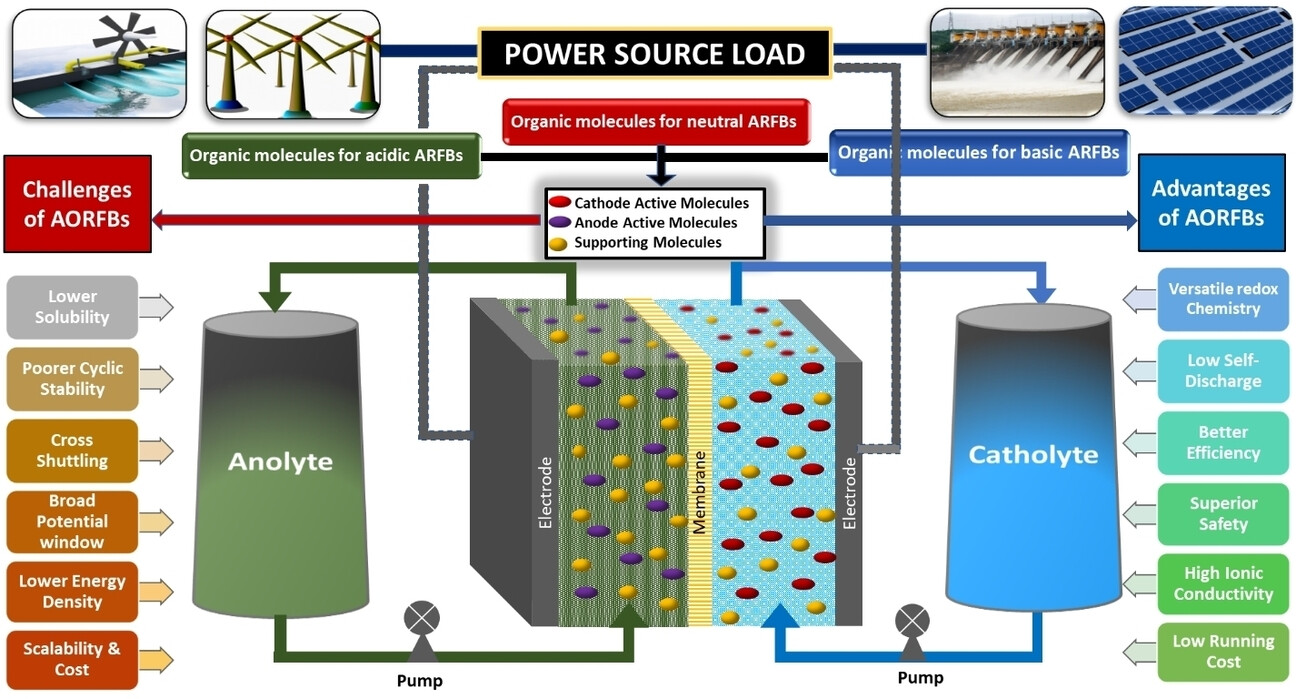
Aqueous organic redox flow batteries (AORFBs) offer outstanding capacity retention, excellent cell performance, high energy density, and cost-effectiveness. This study presents an overview of recently published novel organic electrolytes for AORFBs in acidic, alkaline, and neutral environments. Furthermore, it also presents the techno-economic analysis, current status, challenges, and prospects of AORFBs along with highlighting different strategies to overcome these existing challenges.
Progress and Perspectives on Promising Covalent-Organic Frameworks (COFs) Materials for Energy Storage Capacity
- First Published: 20 November 2023
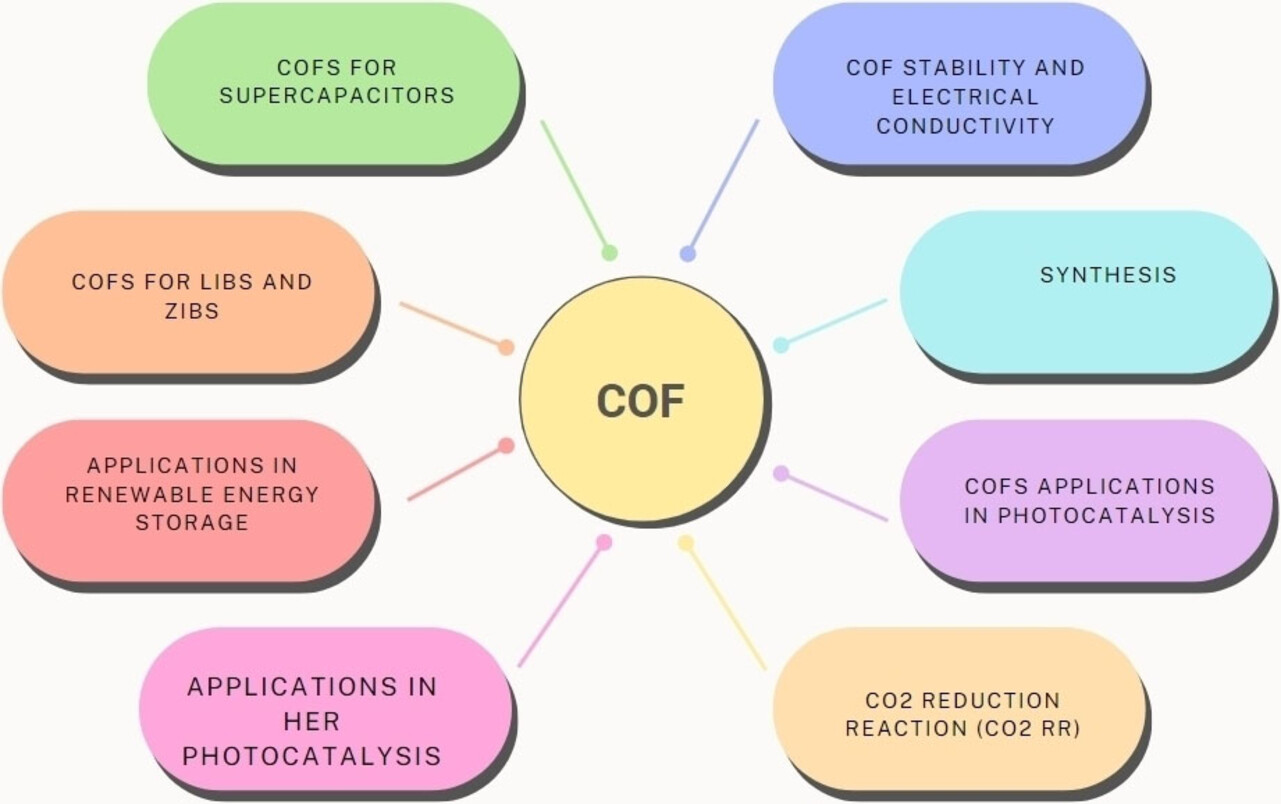
In this review a brief introduction to the history and major milestones of COFs development on a comprehensive exploration of the various synthesis methods and recent successes as well as signposts of their potential applications in carbon dioxide (CO2) sequestration, supercapacitors (SCs), lithium-ion batteries (LIBs), and hydrogen production (H2-energy).
A Critical Review on Hydrogen Based Fuel Cell Technology and Applications
- First Published: 29 September 2023
Telluride-Based Materials: A Promising Route for High Performance Supercapacitors
- First Published: 27 November 2023
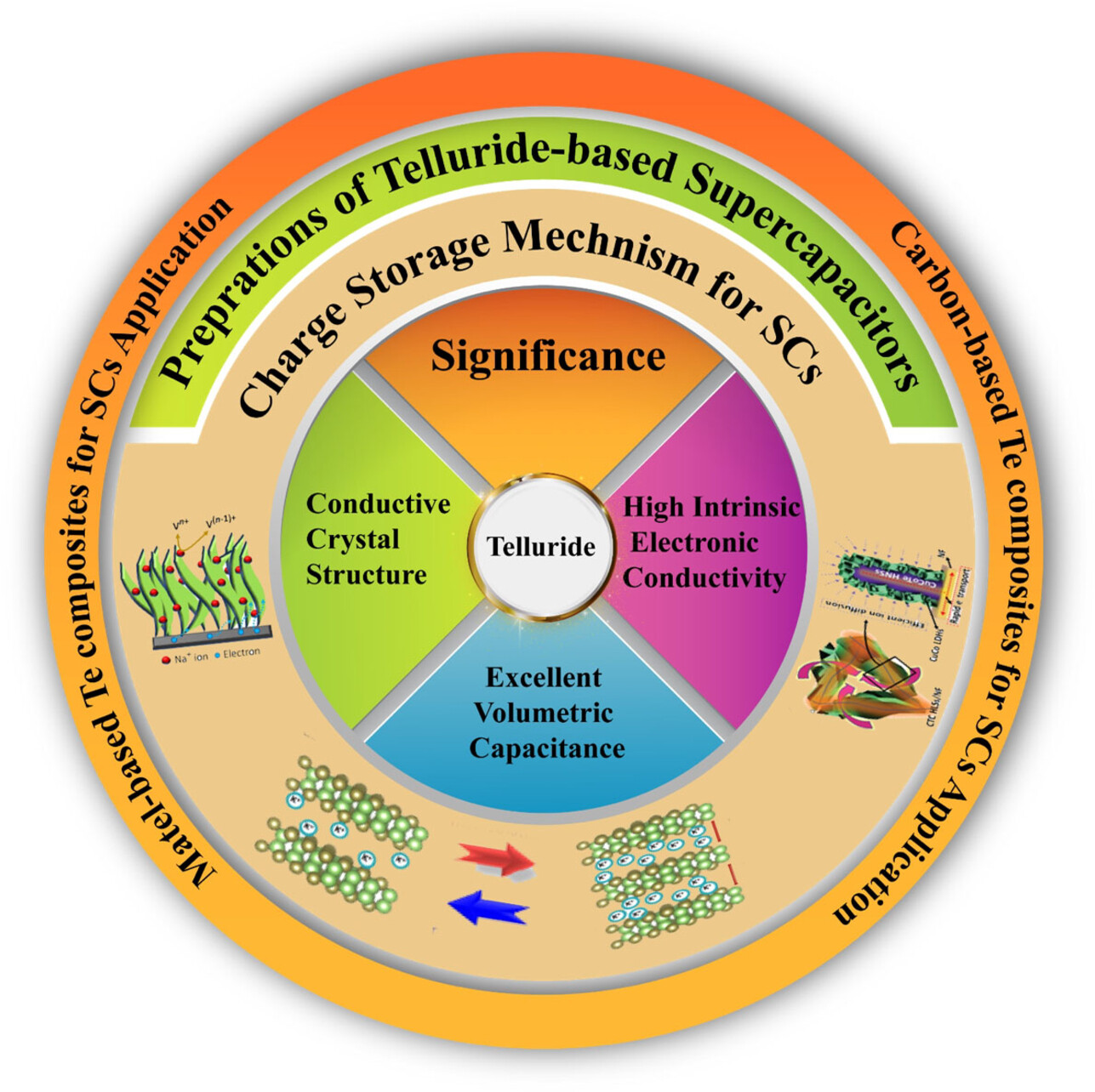
Supercapacitors require high-performance electrode materials. Tellurium and telluride-based materials offer advantages like high conductivity and volumetric capacity. This review highlights their properties, charge storage mechanisms, synthesis strategies, and their applications in supercapacitors. Prospects and challenges for improving telluride-based supercapacitive performance are also discussed.




